






TURF MANAGERS & AGRONOMISTS ARE MOVING TO AERIAL DATA MEASURING TOOLS

STRUGGLES OF SUCCESS AT LUTON TOWN FC






Vitalnova Stressbuster is a specially formulated liquid treatment to help condition turf against stress and also aid recovery from stress.

www.icl-growingsolutions.uk | www.icl-growingsolutions.ie Researched, formulated and produced in house by ICL
Editor Kerry Haywood
Although I hate to admit that anything Greta Thunberg says is correct, I think we would all agree that climate change is a contributing factor in the excessive rainfall over the past few months.
We all want to stop talking about how bad the weather is, but there are very few industries that the wet stuff affects quite like turfcare and we must consider how course and pitch closures affect working conditions - both financially and mentally. The last 18 months have been the wettest since records began in 1836, so is it even possible to prepare and adjust for winters in the future?
Industry expert Mark Hunt takes a look at the effects of climate change and suggests that, in some cases, facilities are unable to cope with current climate fluctuations - they simply weren’t designed to! Read the in depth article on page 44.
Our next magazine will focus on the inclement weather and the challenges you have all faced. How has the extreme rainfall affected cultural practices and fertiliser programmes? If you would like to share your story, please get in touch.
Sticking with the environment, we have an insightful article (page 52) on the enormous potential of beneficial nematodes to support the transition to integrated turf management. Fundamentally, the use of nematodes in an IPM programme will ensure that the amenity and sportsturf sector is managing turf in a sustainable manner and with the utmost level of consideration for the environment.
Another way to stay ahead of the game is to move with trends and technology advancements and we delve into the benefits of drone technology in our cover article (page 8). As demand for precision, efficiency and sustainability continues to rise, as does the need for innovative solutions, drones are changing the turfcare industry landscape.
Also in this issue we have our regular features including Top Tipsleadership and management (page 30), Wellbeing - no reward without risk (page 56) and Talking Turf - pest management (page 68).
When I say pest management, I mean birds... not Greta!
Kerry
t: 07973 394037
e: kerry.haywood@pitchcare.com








Allscott Park, Allscott, Telford. Shropshire TF6 5DY t: 01902 440270
No part of this publication may be reproduced without prior permission of the publisher. All rights reserved. Views expressed in this publication are not necessarily those of the publisher. Editorial contributions are published entirely at the editor’s discretion and may be shortened if space is limited. Pitchcare make every effort to ensure the accuracy of the contents but accepts no liability for its consequences. Images are presumed copyright of the author or Pitchcare, unless otherwise stated.
Printed by Buxton Press
Advertising TSP Media t: 01952 234000





With the development of drones, precision aerial surveys
Passion
Ecologist Sophie Olejnik highlights the role of sand dunes in the context of golf.
The Grand National is subject to intense scrutiny by those outside racing. It is also part of an industry which is facing common challenges, from funding and participation to climate change. Jane Carley reports.
Effective water solutions for all landscapes






















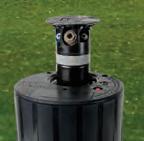





Future-proof your irrigation with Infinity. Countless benefits. Infinite possibilities.
Choose easy servicing and flexible expansion with Toro’s Infinity sprinklers. With its Smart Access, you can now upgrade with ease and avoid unsightly turf scars left from digging up sprinklers as all serviceable parts can be accessed from the top, using just a screwdriver. Infinity. Much, much more than a great sprinkler.
reesink-hydroscapes.co.uk
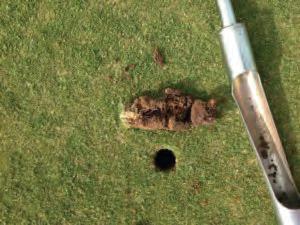
European Turfgrass Laboratories organic matter profile testing has been added to Turf Rewards as a new reward for 2024. This cutting-edge service will provide invaluable insights into soil health and turf performance.
For just 20 points, Turf Rewards members can now claim organic matter profile testing through European Turfgrass Laboratories’ A2LA-Accredited laboratory.
This new reward permits the analysis of three greens at four different depths, delivering a detailed overview of the organic matter levels within your soil profile.
Optimise turf performance with detailed testing
This information is crucial for the effective management of organic matter, helping to ensure optimal soil health and turf performance.
Measuring the organic matter at 20mm segments in the greens is the only method through which organic matter can be accurately measured and subsequently managed. These results can be used to determine how often and the best practice to de-thatch your greens.
“The rewards are not just a day out, but are items that we can actually use to help us, such as agronomic tools. Having these tools as a reward of what we’ve already purchased through ICL is extremely beneficial to us.”
JohnLedwidge,
Grounds Manager, Leicester City Football ClubTesting the organic matter at different depths can also help assess the areas in the profile where improvements are required.
Each core is divided into 4 increments: 0-20mm, 20-40mm, 40-60mm and 60-80mm and each increment is tested by Loss-on-Ignition using the ASTM Standard: F1647 (Method A) “Organic Matter Content of Athletic Field Rootzone Mixes”.
The reward is available to claim on both the UK and Ireland Turf Rewards schemes..
For more information visit turfrewards.com or turfrewards.ie
BIGGA recently revealed that they have appointed a new Head of Membership.
Following a robust and exhaustive recruitment process, Scott Reeves will commence his post on on 3rd June.
Scott is currently course manager at Leyland Golf Club and and served as BIGGA chairperson from 2019-2022.

Scott commented: “BIGGA has been a part of my life and career for a very long time.”.....
I’m delighted to take this new step and become part of the team fighting for greenkeepers and improving the game of golfScott Reeves
The Government recently announced a £35million investment in grassroots cricket facilities and widening access to the sport in state schools.
The programme, supported by the England and Wales Cricket Board, aims to get over 900,000 young people playing cricket over the next five years and will have a particular emphasis on children from lower socio-economic groups, building on existing investment we’ve made.
The funding will also deliver 16 state-of-the-art, all-weather cricket domes in selected cities, with each one built in diverse communities where figures have indicated low levels of physical activity.



Following the announcement, Sport England chief executive Tim Hollingsworth issued the following statement: “The announcement that £35million of new Government funding will be invested into cricket is hugely significant and will help more children and young people from all over England to take up the sport.”
For more information visit sportengland.org





















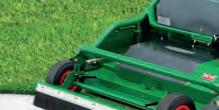











With over 700 visitors and over 60 companies exhibiting, the second edition of Scots Turf demonstrated substantial growth and has built a platform for an exciting future.
The aim of this show was to build on the success of the previous year by offering more stands and educational opportunities for visitors to explore at Hamilton Park Racecourse. An increase in the number of exhibitors from 16 to 64 ensured a diverse range of products from leading industry names such as Campey Turf Care, AllGrass, Dennis, SIS Pitches, and John Deere.
The growing stand count, set to increase again for the third event, has proven that Scotland’s desire for a dedicated show, and Scots Turf Founding Committee member Richard Heywood is ready to continue the growth.
“It was fantastic to see such a broad selection of visitors from all aspects of our industry, and the feedback we received from everyone we asked was incredibly positive,” he said.
“We were blown away and delighted with the response we received from companies wanting to exhibit. Our target in year two was to attract 30 businesses. In reality, we ended up attracting over 60, with a waiting list of ten more, and I think that shows the positive impact we’re having in Scotland.”
“I’d say this was our first proper year as a ‘trade show’, and we were very much encouraged by seeing over 700 visitors coming through the gates, with around 500 arriving in the first hour.”
“It really shows an appetite for something like this in Scotland, and we will be looking to grow year upon year, helping to establish this once again as an event that you need to put in your diary.”
Updates on Scots Turf 2025 will follow throughout the year, including initiatives to support Scottish charitable causes. While demand for stands is high, companies are invited to apply for next year.
The turf industry is mourning the death of Bobby McDougall who died on March 29 after a short illness.
Bobby (42) was Ground Maintenance Technical Officer at Glasgow Life, a position he had held since May 2023. Despite his relatively young age, Bobby held a variety of posts in Scotland, England and Norway, all related to sports turf.
A third-generation greenkeeper, Bobby followed in the footsteps of his dad, Allan McDougall, a former Course Manager at Royal Mid Surrey Golf Club and his grandfather, Bob McDougall, formerly of Hilton Park Golf Club, Glasgow.

Bobby attended Elmwood College, Fife and his greenkeeping career spanned eleven years, mostly at Surrey courses- Royal Mid Surrey, Queenwood, and Walton Heath, but included 2½ years as Deputy Course Manager at Miklagard Golf in Oslo.
It was a natural step for Bobby to move into technical sales with promoted roles at Aitkens, Indigrow and Souters in Glasgow before heading to Fairways Sportsground, specialists in sports construction. Bobby then moved into the world of maintenance machinery sales, joining Fairways GM as Commercial Sales Manager and then, Infinicut, as Territory Sales Manager.
He leaves two children, his mum, and his sister.


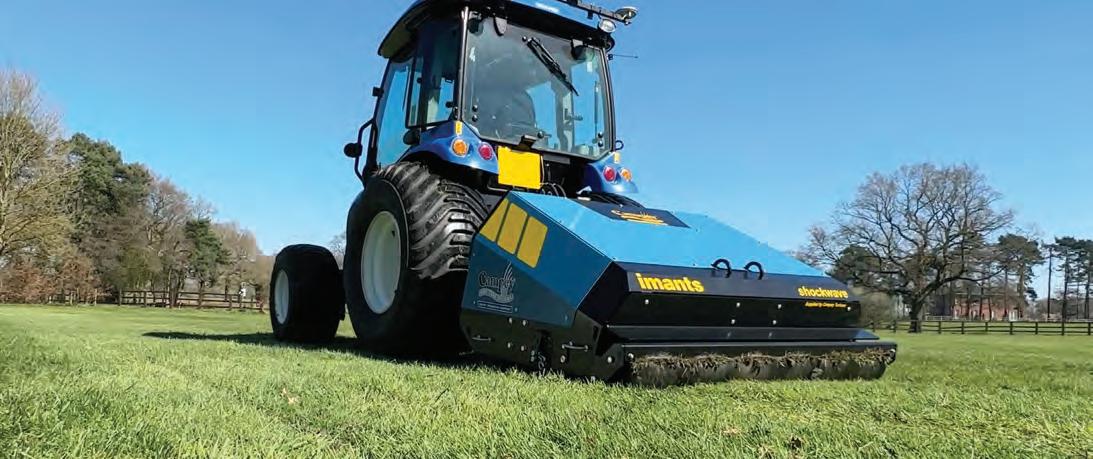
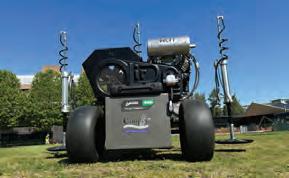








As demand for precision, efficiency and sustainability continues to rise, as does the need for innovative solutions, drones are changing the turfcare industry landscape; particularly in greenkeeping and golf course maintenance.
With the development of drones, precision aerial surveys have never been more accessible. Equipped with high-definition cameras and sensors, drones can capture high-resolution imagery of your entire course. Drones allow you to measure area and distance, as well as volume and elevation. The images can assess turf health as well as identify problem areas and plan maintenance activities with great precision.
Maps offer the ability to overlay irrigation systems and drainage plans. It also allows architect ideas and paper maps to be digitised and added.
Drones have transformed course mapping. They can take measurements which offer unmatched efficiency and accuracy. Drones can quickly and accurately map every inch of a course. They generate detailed elevation models, contour maps and 3D renderings that offer a comprehensive view of your terrain.
Whether you are planning course renovations, optimising irrigation systems or conducting drainage assessments; drone maps can streamline the process. It saves time and resources while delivering accurate results.
By using aerial imagery and data collected, golf course managers can optimise irrigation systems. Water is a precious resource on a golf course. It ensures optimal water distribution while minimising waste. Drones can detect areas of overwatering or underwatering. They can identify irrigation system inefficiencies and provide real-time insights that enable adjustments to watering schedules. This leads to healthier turf, reduced water consumption and lower operational costs.
Watershed maps are a fantastic way to start conserving water on your course; they show the
exact route water takes as it runs across the course. This provides invaluable information when you are considering a pond or reservoir for course irrigation.
Protecting turf health is paramount in golf course maintenance. Early detection is key to preventing pest infestations and disease outbreaks.
Drones equipped with multispectral sensors offer a powerful tool for pest and disease detection. By scanning the course from above, drones can identify signs of stress and discolouration. Whether it is detecting grass species, monitoring fungal infections or identifying areas of nutrient deficiency, drones provide golf course managers with the actionable intelligence they need to implement targeted treatment strategies and preserve turf quality.
Tree count
Once the aerial imagery is captured, software and algorithms are used to analyse the data and identify individual trees. These software tools can automatically detect and delineate tree crowns, enabling precise tree counting.
Drone tree counts offer a fast, efficient and cost-effective method for gathering valuable data about tree populations. This enables informed decision-making for tree management and conservation.
Drone conclusion!
Frazer Harrison, Director at Vantage Imagery Ltd summarised his passion saying: “Drones are revolutionising greenkeeping and golf course maintenance, offering a wealth of benefits and opportunities. From precision aerial surveys and course mapping to intelligent irrigation management and pest detection, drones provide invaluable insights and capabilities that enable proactive decision-making and optimise turf health and course conditions.”
Elevate your golf course management to new heights today, email: frazer@vantageimageryltd.com

Mike Laheen from The Leicestershire Golf Club has adopted drones into his course management and enhanced the way he sees his course. He gives us his account of the technology...
Vantage Imagery has been on site to do high-resolution 2D and 3D aerial imagery. We had a Digital Surface Model of the course topography and will be doing a tree count which will form the basis of a full-site tree survey - as well as overlaid scans of our drainage maps and plans for the irrigation system.
Our current site plans are old and not drawn to scale! When it’s drier, we will do another flight of the course, which will make it easier to see where the land drains are. This will help me immensely to determine the cause of drainage issues which have forced closures throughout the winter.
How have the drone images helped course management?
There are several areas in which I have used the imagery and mapping. One is to measure the area of course features accurately and quickly, which has allowed me to better gauge the quantities of material for bunker renovation such as the EcoTec
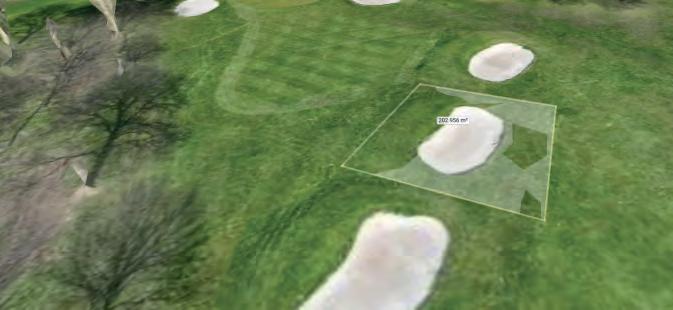
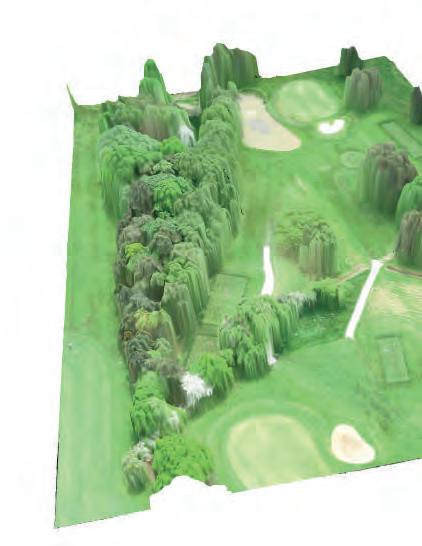
liner and bunker sand. With the rising cost of materials, exact estimation is becoming critical.
I’m particularly excited about the ability to draw accurate boundaries within the cloud-based application. I can then export for use with our John Deere HD200 sprayer which has the Starfire RTK system fitted. This means I can draw an area on a map with centimetre accuracy and then send an operator out to spray the exact spot.
Have there been any challenges throughout the process?
On our site, we are close to Leicester Airport. This meant that Vantage Imagery had to let them know and agree on a flight window in advance. It also means that there are restrictions on using a drone of our own. I believe we would need to have an operator with a commercial drone pilot’s licence.
As with all things, there’s a learning curve and I’m only just finding my feet in week one! In the past, I’ve used QGIS, Google Earth and John Deere Operations Centre. The cloud-based software from Vantage Imagery is different from those other applications, but very simple.
Do you see long-term potential in using drone technology in turfcare?
Absolutely! Having plans and maps available at your fingertips, rather than old paper maps rolled up in tubes, makes life easier. Being able to easily record data on a map makes it more likely that changes to irrigation, drainage or course layout will be documented - which is a huge problem with paper maps.
With the increasing availability of autonomous machinery like robot mowers, drone mapping will become vital. The technology already exists to assess turf health to create spray programmes. Our HD200
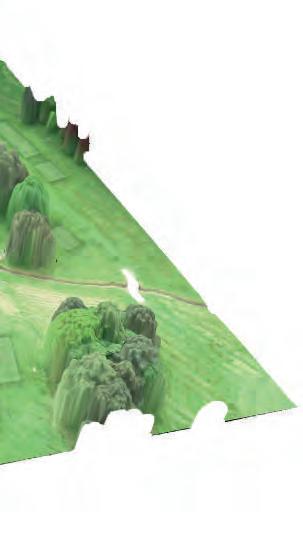
sprayer is already capable of doing this, so we could theoretically be doing this today. Unfortunately, I don’t have the budget currently to get the drones in every month to fly the course and create the prescriptions!
How much has it cost your club for the drone images and work?
The cost of aerial surveying has been reduced dramatically. When I first got interested about ten years ago, it would have cost over £5000 to have a flight done. Our first flight, with 2D and 3D maps, plus two paper plans overlaid, cost less than £2000.
Drones offer an opportunity to carry out tasks
and with
A PwC Skies Without Limits report states:
“If the government were to support drone adoption in the commercial market between now and 2030, it would grow the UK economy by £45 billion, save UK businesses £22 billion and create 650,000 high-tech jobs. This would also save the environment 2.4 million tons of carbon.
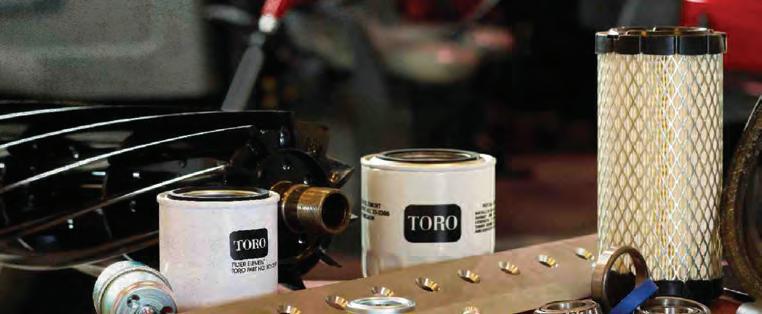



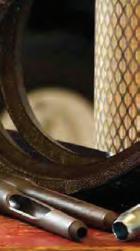


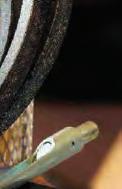




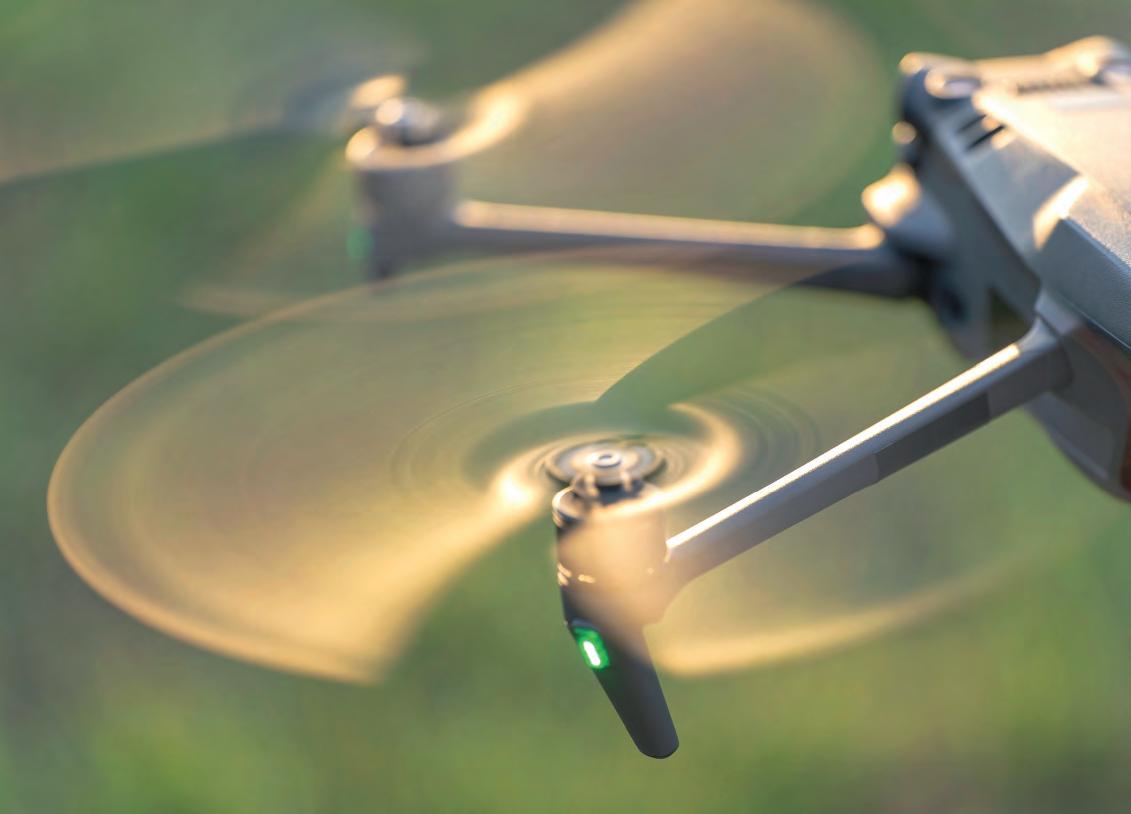

Steve Hardy from Kenilworth Golf Club told us how he has utilised drone surveys for his communication methods.
“Eventually we would like to make the data accessible to all members so that they can see the developments before we undertake the work. The drone footage will enhance the way we can communicate with members. However, that’s not to say we won’t still do more conventional methods of communication, such as newsletters and member forums, for those not using social media.”
“when I first started in the industry a monthly newsletter was more than acceptable and you could communicate everything you were doing at that time. We now have the technology to actually show what we are going to do; the surveying data takes it one step further and gives another level of detail to members.”
“We recently had a members spring forum to discuss course improvements and I was able to simply click a button to show each layer of our architects masterplan whilst presenting.
For instance, we’re aiming to do 3600 metres of drainage this year. 1000 of that is on the 1st fairway and 500 is on the 14th approach. Before drone technology, I would be going out with a theodolite, a laser and a measuring wheel, and it would take days to gather that information.”
Steve mentions time saving as one of the key bonuses to using drones: “We can spend hours on end working on communication with members. Now, drone footage does all the hard work in gathering data for us to present.”
He summarised: “I would recommend drones - even if it’s only for communication purposes. It has cost the club under £3000 for the Vantage Imagery surveys. These will be used for years and getting them refreshed is a minimal cost. No one wants to use the old paper plans anymore and it has saved me a lot of time and work for sure.”

It will come as no surprise that the United States are progressive in the use of drone technology.
We spoke to Chris Williams, Sales ManagerSoutheast US/Helena Agri-Enterprises, LLC about investment in drone technology with their team of sports turf agronomists.
Chris commented: “From a turf management perspective, Helena currently offers two views in our drone capabilities.”
“First, we utilise RGB (Red, Green, Blue) for a real world view of current color and conditions. RGB is used to create imagery as we would see pictures and used for a variety of purposes (site maps, promotional footage, shade patterns, acre/square footage count).
Secondly, we utilise thermal cameras to identify areas of concern, where temperature change can be caused by many factors, the thermal image gives us a road map to the
locations needing attention. Thermal imagery can be utilized to identify drainage/irrigation lines, drainage/irrigation issues, high traffic areas and such.”
“We currently have about ten drones being utilised around the United States within the golf/sports turf markets. We have worked with a few high profile customers in gathering both RGB (promotional photos and videos) and thermal image maps to identify areas of the field/pitch holding heat for a myriad of reasons (moisture or lack of moisture, as well as high traffic areas).”
“Customers are slowly growing to understand the data and utilising the imagery to improve the maintenance practices of their respective facilities.”










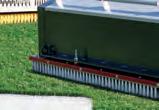












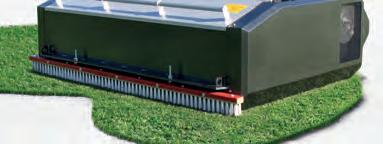

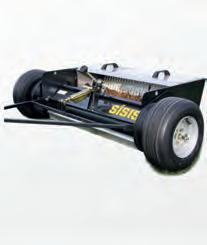









 Wes Henshaw Golf Sales Manager
K.A.R UK Ltd
Wes Henshaw Golf Sales Manager
K.A.R UK Ltd
Real-time aerial imagery captured by drones equipped with high-resolution cameras has been implemented into irrigation control systems. Wes Henshaw explains.
These detailed aerial images provide a complete picture of a golf course or sports pitch, allowing for precise irrigation system management.
The ease and speed with which these images are produced ensure managers have the most current information readily available. This eliminates the need for time-consuming traditional methods and allows for prompt action.
Once uploaded to the Hunter Pilot Control System’s map feature, the high-definition image becomes an invaluable resource. Managers can easily visualise the entire playing surface. When specific areas require adjustments to sprinkler runtimes or manual watering, they can
Leon Dalton from Burton on Trent Golf Club told us how drones have helped map, develop and improve the course.

readily access the map on their mobile phone and address the issues promptly. This targeted approach optimises water usage, ensures even distribution across the course, and prevents dry spots or overwatering.
This data offers additional benefits beyond irrigation control. It can be used for topography surveys, particularly when installing a new system or assessing an existing one. By analysing the course’s topography, managers and designers can identify areas where water collects or runs off This information facilitates the implementation of solutions to capture and utilise this water, promoting a more sustainable water management approach

Leon suggests this could be something used by all courses in the future: “We have had several drone flyovers. It isn’t a case of having one fly over and then that’s the job done. We have used the images for irrigation, bunker projects and drainage. It helps to build up the layers of the course plan and have the data at my fingertips.”
He explained how the images helped with the drainage: “Whilst the turf was burnt off, the footage would highlight any visible drain lines; it turned out there were quite a number of them. This winter, we have been able to use the information to pinpoint problems and repair and rectify them. Without that data, we would have never seen it.”
The drone images have also helped with bunker construction: “I can take the old images of the
course and edit where I want a bunker to be on a specific hole. I can see exactly where the bunker will be, along with its depth and the size.”
Drone imagery enhances tee development, he said; “If I’m constructing a new tee, I can mark out the boundaries, work out the area and the cubic metres. Before I go onto the course, I’ve been able to map out all the details on the images, as well as figure out a rough cost.”
He looks to the future: “Keeping these records allows us to mark down what has been done. I use the Vantage Imagery system and Managing Director Frazer undertakes all the mappings so that I can use the images to mark the findings. I can then also use the tools on the system to plan for future projects.”











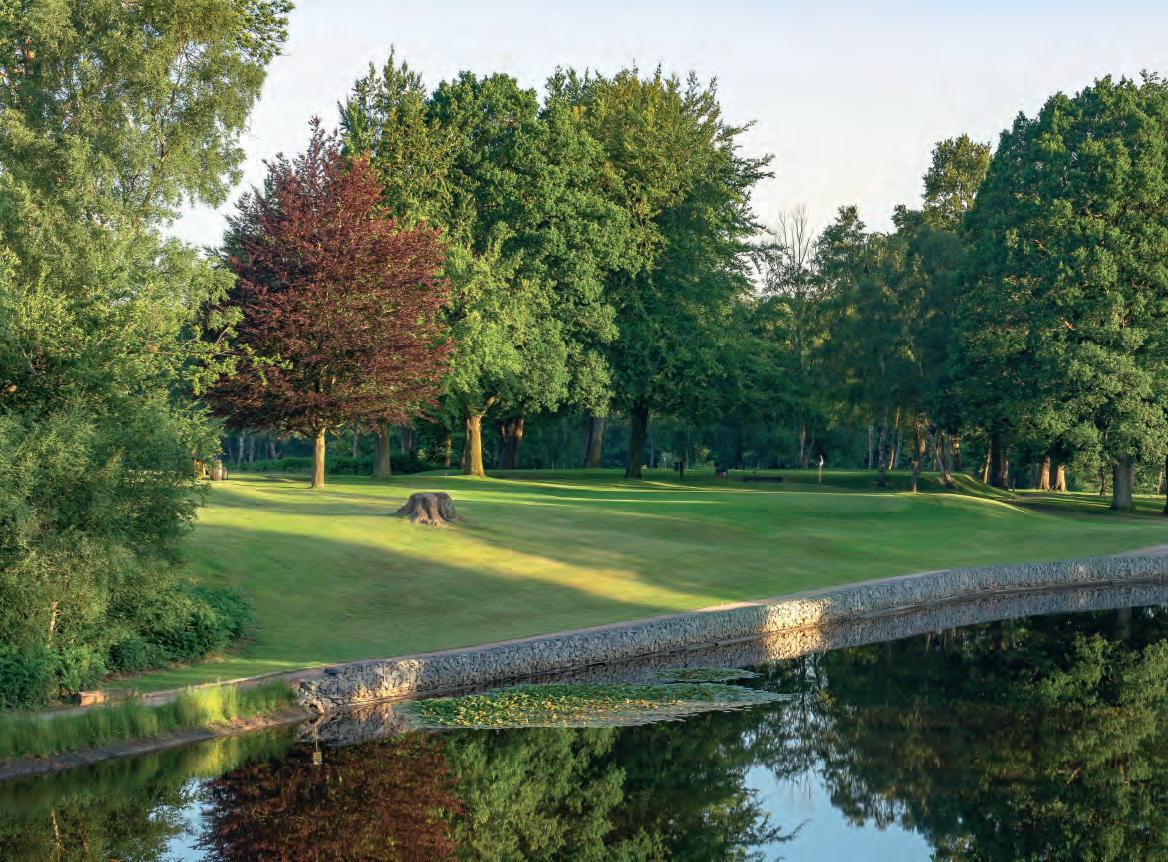

Ben Clements Course Manager
A dragon reputedly roamed the mediaeval forest that spreads out along the edge of Cottesmore Golf & Country Club. References to the legendary beast in pubs and place names permeate this region of West Sussex.
What its fiery breath decidedly did not do was to burn down Cottesmore’s clubhouse, a disaster that nearly left a longstanding family business in ashes.
Like the mythical phoenix that rose up from the remains, Cottesmore was reborn and thrives under the same family ownership as a new generation takes the reins, creating impressive
fitness, wellbeing and dining provision, plus a hotel and six lodges alongside 27 holes of parkland golf for its 2,000 members (and there’s a waiting list).
The passion and commitment to make that rebirth happen clearly runs throughout Cottesmore and Course Manager Ben Clements exemplifies it.
Locally born and bred, Ben came to the club nearly 11 years ago and rose rapidly to take up

his present post three years later. He’d started out at 16 as a greenkeeper at nearby Tilgate Park where his uncle was head.
Now 34, he runs a seven-strong team, including two part-timers (three days a week each) and an apprentice, managing the 6,444yd 18-hole Griffin course and its full-size, 9-hole, par 3 and 4 Phoenix counterpart.
“We’ve almost no time to think, it’s so busy,” says Ben. “Pro-Ams, club championships, seniors events, medals and Stablefords every weekend.”
A stone’s-throw from Gatwick Airport and Crawley’s industrial and business hub,

I want to create an effect that’ll make people want to visit us
Cottesmore maintains an atmosphere of peace and calm in which to play golf. It shares one of its boundaries with the environmentally important Buchan Country Park, so Ben has to ensure he ticks the sustainability boxes where he can.
“Our ten-year plan covers Tarmacing 100m of paths annually and introducing secondary drainage to link with the primary system, and that will include tining, slitting and shock waving. We started a year before Covid struck and it has been difficult to get back on track, but we’re there now.”
“Purchasing a Shelton trencher just after the pandemic allows us to complete plenty of that work in-house, avoiding contractors’ costs – usually we start after August, following renovations, reaching 400mm depth and focusing on fairways and approaches, as our tees and greens are good,” he explains.
Main
Griffin 17th green
Below
Left Griffin 18th green and clubhouse.
Right Toro 3420 greens mower (hybrid), new electric buggy and ProCore 648 pedestrian aerator.

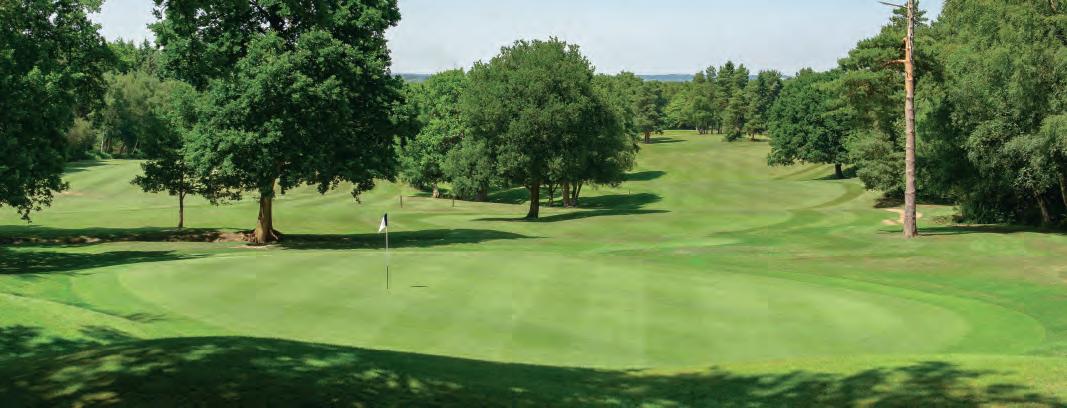
When so many courses are sodden or under water, Cottesmore is fortunate in being able to store plenty on-course in two full-size lakes (which stretch across two Par 3s and a Par 4) and three collection ponds. “One’s a fishing attraction, stocked with pike and carp, and a stream feeding Buchan Park,” says Ben.
“A flock of Egyptian geese visit regularly, as do herons, while buzzards soar overhead. We’re not short of deer here either. The lakes stay clear most of the time and we allow the bullrushes and
reeds to grow along the perimeters, maintaining buffer zones around the water edges where we do not apply herbicides or fungicides.”
Cottesmore cannot escape the rigours of rain however. “The courses lie on heavy clay so can become waterlogged. We have to close them to play sometimes,” Ben adds. “Last year was fine until December, then it never stopped raining and the fairways became unplayable. We closed for at least two months. Many others were in the same position.”
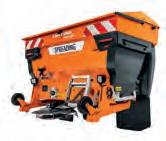
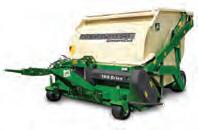
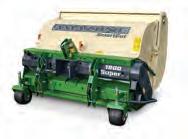





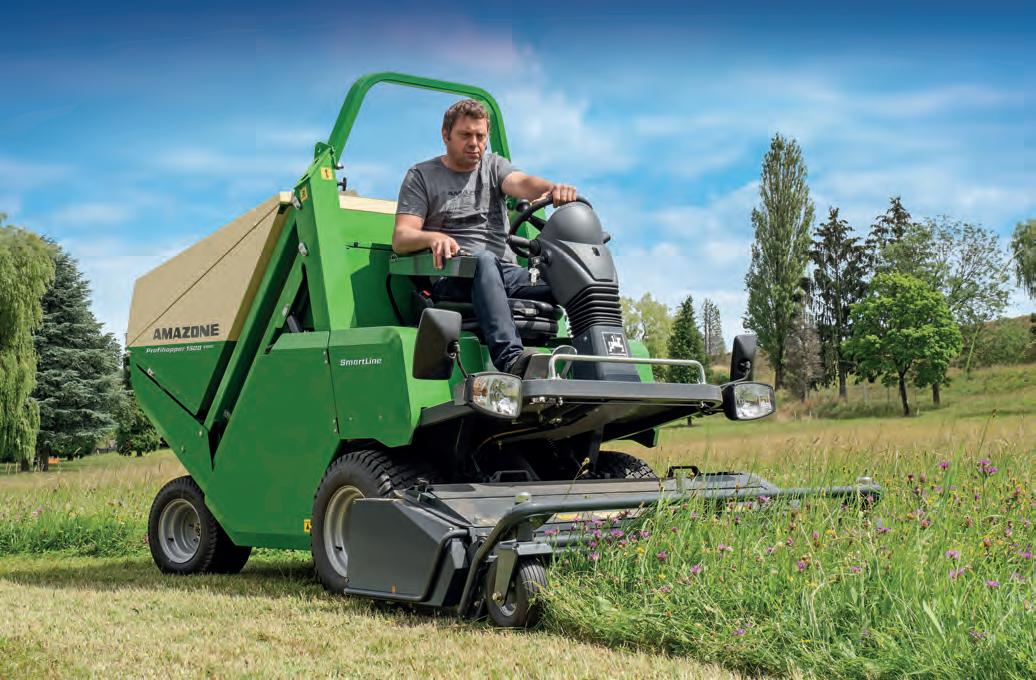







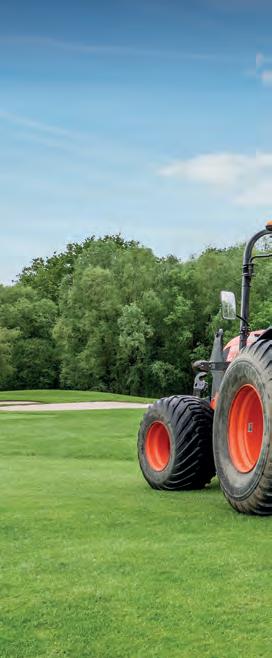


Having thinned out the oaks, chestnuts, beech, pines, silver birch and ash (“We’re free of dieback thankfully.”), the team is busy replanting willow saplings in areas that stay wet.
That includes a stretch between holes 10 and 11, where trees have rotted, and the plan is to enhance it with heather.
Late flowering purple rhododendron ponticum grow plentifully – and aggressively - across the landscape. “Although a good filler and colourful, we have to clear it to prevent it taking over.”
I wouldn’t ask any team member to do something I’m not prepared to do myself
“But Cottesmore is more than a golf club, and aesthetics go a long way to attracting visitors and members. The rhododendrons and azaleas planted up along the driveway to the clubhouse are visually stunning when in flower, as is the short par 5, 14th hole when striped up. The
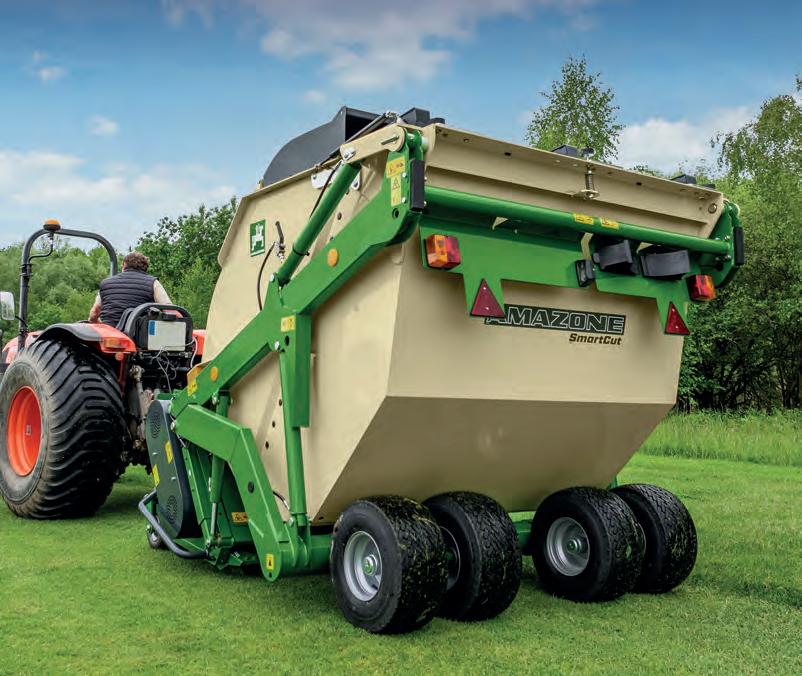



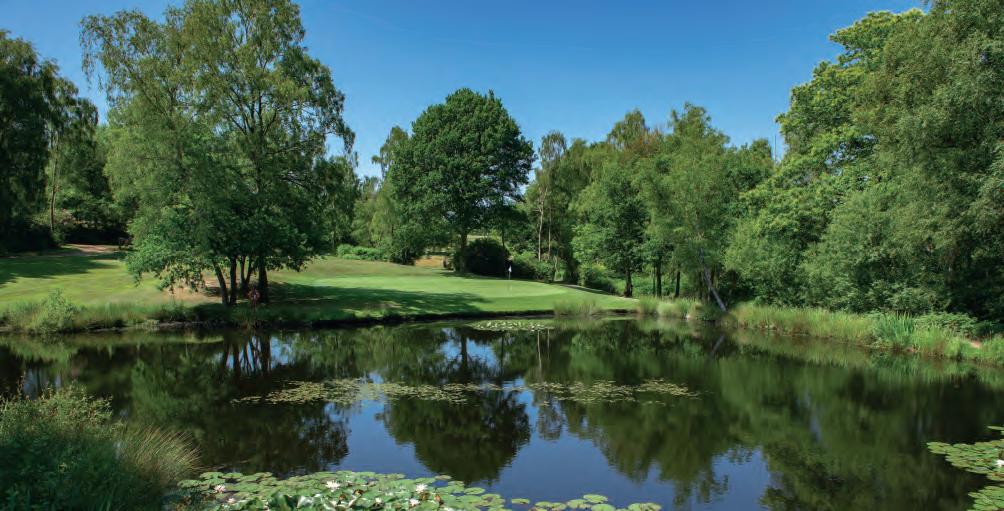
cuttings need to be on point. I know what I want to create, an effect that’ll make people want to visit us.”
When we spoke, the team had just finished spring renovations. “Keeping golf continuous while we’re working is our priority, so we shut nine holes at a time, keeping the front nine of the Griffin in play, then switching to the back nine, before closing the Phoenix to complete the job.”
Totalling just three days to finish – “I don’t mind the 17-hour days.” – the work includes deep aeration with a Wiedenmann down to 275-300mm, over a medium sand dressing; also shallow aeration, hollow tining with a ProCore at 100mm.
Overseeding with rye and fescue, rotary brushing, blowing debris off greens, cleaning irrigation heads, double rolling greens with a TruTurf roller, then cutting new holes to complete the work.
Ben is another course manager fond of annual meadowgrass in the sward. “I like Poa, when it’s cut low to prevent seed heads appearing –2.5mm in summer and 3mm on average.”
“Now all our curatives have disappeared off the market, keeping turf clear of disease is difficult,” Ben concedes. “Fusarium creates tea plate-sized patches, so it’s vital to keep the courses free of it with a robust prevention programme.”
Besides applying liquid feed to boost sward density, Ben’s trying growth suppressants, next to a good foliar programme to create density on the greens.
The team also allows sections of the site to grow high to allow more separation between holes, and wildflower planting is on the cards, Ben says, to attract pollinators.
Recycling’s a prominent part of Cottesmore’s management. “All food waste is composted then mixed with green waste and wood chip for a year before applying around the site. We generate leaf mulch separately.”
What’s his management style? “To create an environment that the team love to work in. Why do they get up in the morning and want to come here? I’ve seen some leave Cottesmore for more money, only to return.”
“I work with individuals, each is different. I ask how they are outside of work – any issues or problems I may be able to help resolve for them.”
“Managing people is challenging but rewarding. I’m very old school and see it as my duty to come to work with a smile on my face. I like to lead by example and wouldn’t ask any member of the team to do something I’m not prepared to do myself. When I come to Cottesmore, it feels like a second home.”
His self-confessed “forever job”, course management at Cottesmore boils down to these essentials for Ben – “Honesty, playability, ergonomics and progression”.
Article by Greg Rhodes.















Sand dunes are listed as the habitat most at risk in Europe in terms of biodiversity loss. Ecologist Sophie Olejnik highlights the role of sand dunes in the context of golf.
Nature’s process of building a sand dune is called succession.
Sand dunes have a predictable lifecycle, with young and mobile dunes forming at the beach and old, stable dunes pushed further inland. Waves push sand up onto the beach, then the wind picks it up and moves it around the coastline.
If there are any obstacles on the beach, the wind slows as it reaches them, dropping the sand particles. Larger sand grains are dropped in front of or pushed up it, while smaller grains are often deposited behind it. As this process continues, ridges of sand build up and start
to form a sand dune. The stronger the wind, the higher the dunes! As the wind is always changing, dunes are also always changing, growing and shifting.
Sand dunes are listed as the habitat most at risk in Europe in terms of biodiversity loss, and they face threats from many different things. They are at risk of becoming stabilised so that the dune sand is no-longer able to move freely. Invasive species are also a big problem; when plants or animals who aren’t native to a dune environment end up in a sand dune, they can flourish quickly and overwhelm the other species which are adapted to live there. With this comes species loss and less biodiversity. All the


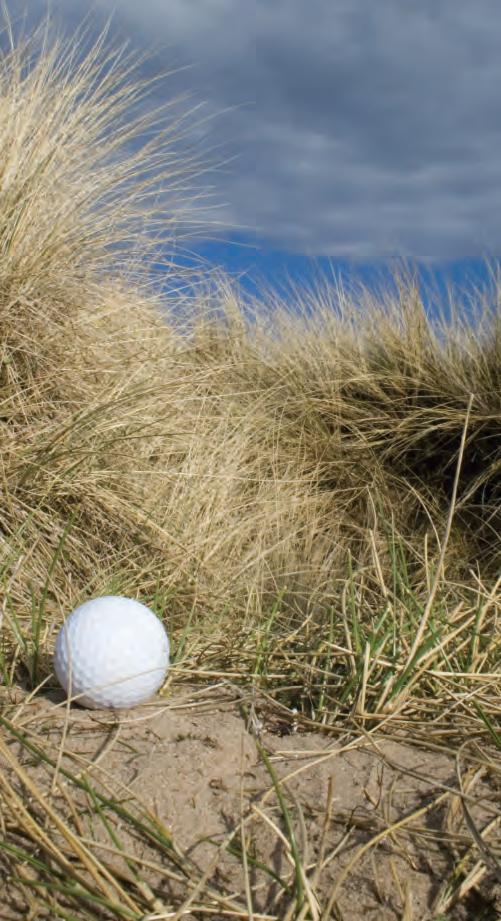
extra plant growth means the sand becomes more enriched with nutrients too, encouraging even more plant growth and stabilisation. We’ve got a BIG BIG job!
Over the last eighty years, nearly 90% of the open sand has disappeared, being replaced by dense grass and scrub. The dunes have become stable and fixed, and rare wildlife has disappeared. This change has been caused by factors such as the introduction of non-native plants, lack of traditional grazing, a declining rabbit population and air pollution.
Unfortunately, conventional dune management over many decades has created stable dunes that have become overgrown with vegetation. Conservationists now know that this is actually putting these special areas at risk and the species that live within them. As our understanding of what’s best for the dunes has changed, new conservation methods have evolved.
“In advance of World Sand Dune Day, we wanted to highlight the role of sand dunes in the context of golf,” explained Sophie, “after all,
the rolling dunes around our coastline support a plethora of golf courses which have been there in one form or another for over 100 years.”
Sophie continued, “Take Royal Troon for example, this year’s Open venue, which has been a part of the dune system since 1878. Its dune heath, acid and calcareous dune grasslands has formed the backdrop to nine Open Championships. The two are inextricably linked and it’s not hard to see why. Natural blowouts provided the first bunkers and undulating dunes which created unmatched challenges compared to other landforms.”
Sand dunes beauty is undeniable, often supporting rare flora and fauna, becoming awash with colourful wildflowers and alive with the hum of bees and butterflies during spring and summer. One thing that dunes are not though is stable – they are alive and dynamic by their very nature, constantly moving and changing, or at least, they should be. Sophie explained, “Over many years, our idea of dune conservation was to support stability, but in reality, we needed to do the exact opposite. In
World Sand Dune Day was created by Dynamic Dunescapes and Sands of LIFE* back in 2021 to bring together communities to highlight the importance of dune systems across the world. Sand dunes are incredibly special, but their future hangs in the balance as they become increasingly stable and at risk of succession. They are currently listed as the habitat most at risk in Europe in terms of biodiversity loss, due to a multitude of threats, but there are some amazing schemes being implemented and plenty of people supporting them to help improve our dunes prospects.
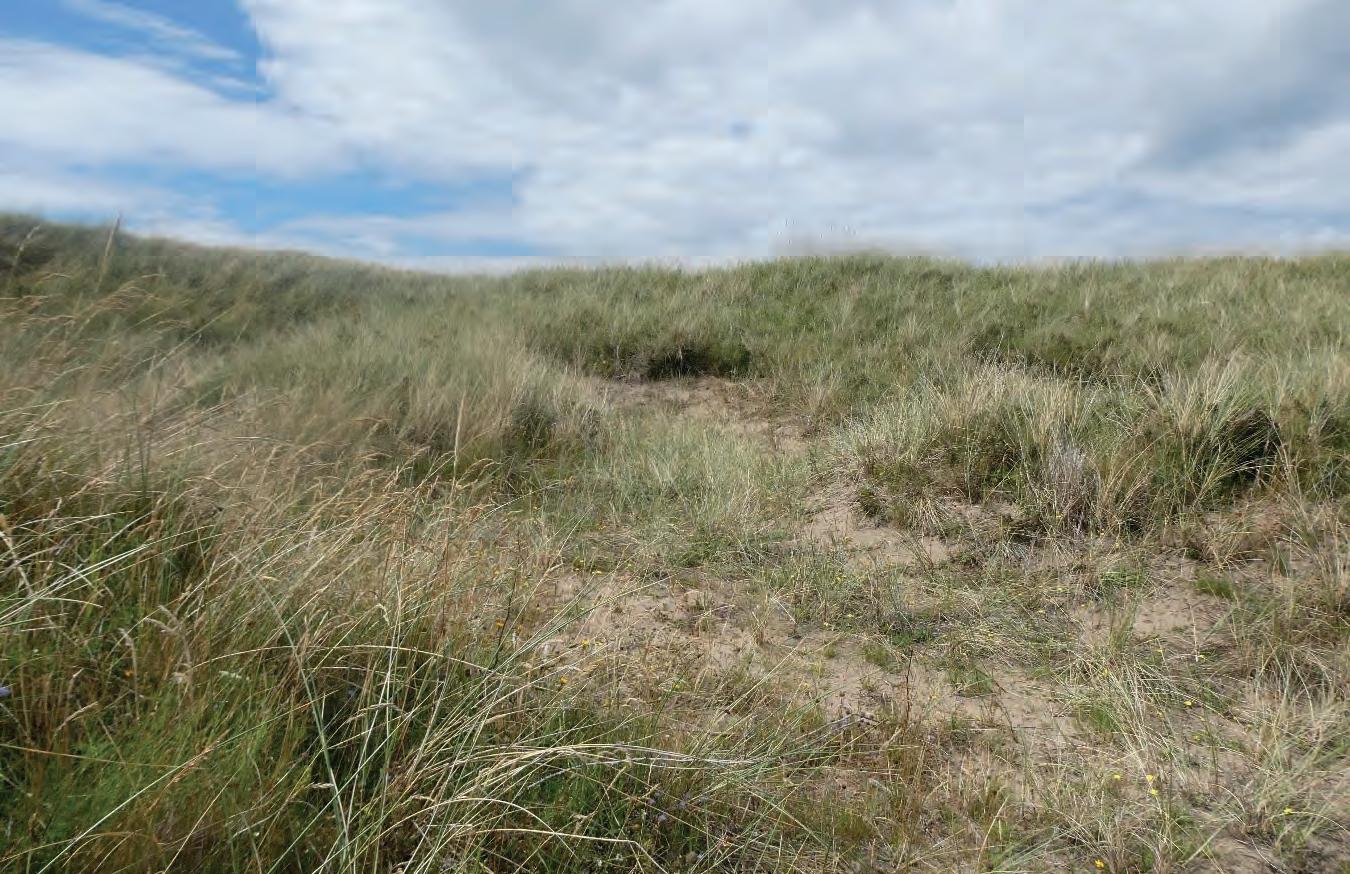
Above A recovering sand scrape at Turnberry which is alive with butterflies and day-flying moths during the summer months as they feed on the varied wildflowers that have space to grow and thrive in the open sand.
Below View of Braunton Burrows.
fact, over the last eighty years, nearly 90% of the open sand in dunes has disappeared and has been replaced by dense grass and scrub.”
She continued, “This presents a problem for dunes, and the extremely sensitive plants and creatures which rely on them. In particular, the dune habitats which are quickly lost through succession are the patches of bare sand, dune slacks and short, species-rich dune turf.”
Let’s start with sand, since that’s the foundation of dunes. If you were to visit Braunton Burrows down in North Devon, or Ainsdale Dunes in Merseyside, you might spot ‘deserts’ right in the middle of the dunes. These large open areas of sand have been created through the removal of years of vegetation




Sand dunes are listed as the habitat most at risk in Europe.
Since 1900, the UK’s sand dunes have declined by a third, and almost two thirds in Wales.
The largest sand dune system in England is on the Sefton Coast and is over twelve miles long.
The oldest dunes at Sandsdale Haws are around 400 years old.
growth to allow the movement of sand and for pioneer dune species to re-establish themselves - in a way, hitting ‘reset’ and letting the dunes shift and re-shape themselves. Similar works on a smaller scale have also taken place at various golf courses around the UK with scrapes becoming a bit of a trend in golf architecture. In the right place, and with the right management, these scrapes are beneficial for both dune dynamism and for golf, mimicking natural processes and creating open space for easier ball retrieval.
Golf course managers are becoming increasingly aware of the importance of bare sand, this being an intrinsic part of any dune system, allowing pioneer plants to establish and sand-dwelling invertebrates to thrive. The key to these pockets being a success is to



allow them to flourish over time, cutting and collecting when necessary to retain an open, diverse sward, and creating other successional areas of bare sand to keep a mosaic of dune habitats. These are not bunkers and nor should they be treated as such, beyond the occasional ‘tidy up’ of undesirable plants such as ragwort, nettle and bramble which can all readily take



hold and establish a solid footing. Even dreaded invasive non-natives (INNS) often take a liking to bare sand, taking the opportunity to spread even further.
Non-native plants such as sea buckthorn, Japanese rose and Montbretia are present on many dunes to the detriment of the sensitive habitats in which they grow and the wildlife that relies on them. INNS are a huge threat to our dunes, not just in the UK but across Europe, with various projects already underway with


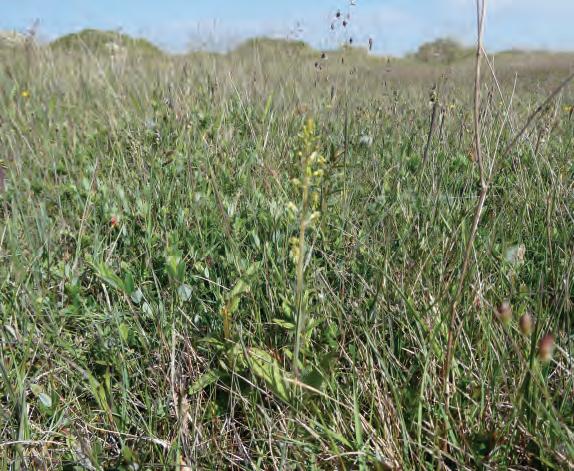
Ro tem facepedis ra quae occum res debis
Nearly 90% of
Above Common
the sole aim of tackling alien species (see LIFE DUNIAS project in Belgium). These can be costly to control and unsightly during the removal process, but as custodians of these important landscapes it is up to individual clubs to ensure INNS management is considered as part of general golf course management, with monitoring plans and funding set aside to deal with them. Some golf clubs may be
able to collaborate with local communities (or members) to hold work parties for non-native control, something which works well across various sites in the UK – take Ainsdale Dunes NNR for example, where regular scrub bashing days are held during the winter months. As an example from golf, Royal Troon has also been removing large patches of Japanese rose over several years, resulting in an increased





The Kress RTKn robot mowers extend unmanned mowing to larger areas. They efficiently operate in parallel lines and autonomously move from one area to another, as if driven by humans. There is no need for boundary wires or on-site aerials. Available models are capable of maintaining grounds from 3,000 m², right up to 36,000 m².
Speak to your local grounds maintenance machinery dealer today to learn more.




population of Isle of Man cabbage, which is a plant endemic to Britain and one of the reasons for Royal Troon being designated as a Site of Special Scientific Interest (SSSI).
What can we do to play our part?
Whilst it may be difficult, indeed impossible, for many golf clubs to introduce grazing animals onto their golf courses, there is the option of

cutting and collecting dune grasslands using machinery where access allows. This technique, which is already seen across most links thanks to its added playability benefits, means that excess, unwanted nutrients are removed, and native wildflowers and fine grasses can thrive. Such management means that a rich diversity of orchids continues to flourish at clubs such as Royal St George’s Golf Club, and nationally
 Far Left Dune slacks at Royal Birkdale Golf Club.
Far Left Dune slacks at Royal Birkdale Golf Club.

Below top Amber sand bowl snail at Saunton Golf Club, a protected species in the
protected snails have recently taken residence at Saunton Golf Club.
Then there’s the restoration or creation of other dune habitats, like dune slacks. At Royal Liverpool Golf Club, their continued management of pools and slacks at Red Rocks SSSI with Cheshire Wildlife Trust and Natural England has meant that the natterjack toad population continues to prosper. Not too far away, dune slack creation at Hillside Golf Club. has resulted in the establishment of over one hundred native plants and the discovery of an uncommon liverwort (a small flowerless plant that produces spores and grows in damp areas), purple crystalwort – last seen on the banks of the river Mersey over one hundred years ago! These features are another important part of the dune habitat puzzle.
“These stories only represent a snapshot of the successes of dune management and restoration,” explained Sophie. “Why not find out
Dynamic Dunescapes and Sands of LIFE are partnership projects that have been working to restore sand dunes across England and Wales for the benefit of wildlife, people and communities. Made up of multiple statutory bodies and environmental NGOs including Natural England, Natural Resources Wales, and Plantlife, the projects both end in 2024. Visit their web pages to read all about their incredible work: www.dynamicdunescapes.co.uk/the-project/ www.naturalresources.wales/SandsofLIFE?lang=en
Below bottom Isle of Man cabbage in a sand scrape at
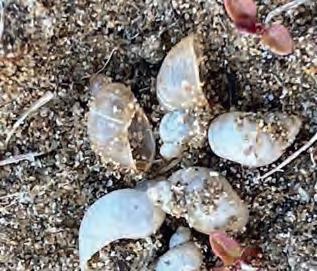

what’s happening near you or have a think about what you could do to give a helping hand?” She cautioned, “As always, before undertaking any works, seek advice as ecological and geomorphological surveys may be required to ensure that the proposed work is the right course of action for nature and the landscape. To help, there’s a Sand Dune Managers Handbook which has a small section on golf course dune management, which I’m currently helping to update, it’s a really useful bit of guidance! You can find it by visiting: www.dynamicdunescapes.co.uk/ wp-content/uploads/2021/07/ Dynamic-Dunescapes-Sand-Dune-ManagersHandbook-June-2021.pdf
Our legacy
Turf managers up and down the country have a real opportunity to get involved in this great work. So, on this World Sand Dune Day, why don’t we make a promise to continue to protect and restore our sand dunes and create our very own legacy of conserving our coastlines for generations to come!

















Why you need to attend...






Outdoor Demos
Free Practical Training





Indoor & Outdoor Zones
Landscaping Zone
Retail Area
On-site Camping


Central location
Evening entertainment including a fully licensed on-site bar, Live DJs and bands.







Network, relax and listen to some great music





James Matthewman highlights some simple tools and objectives he has recently learnt after successfully completing a leadership and management apprenticeship.
A turf manager has to deal with a lot of stress and difficult times, but being there for your team and knowing how to lead your staff correctly and efficiently will create a happy workplace.
Having regular performance reviews is an excellent way of boosting the individuals confidence, whilst also giving constructive criticism and showing them where they can improve. It is also a useful way of listening to what they have to say and what things they think could be done better to improve the workplace.
A SWOT analysis is a very useful tool for any manager to use, whether it is used for themselves, an individual staff member or for a particular project. You can always use this analysis to find any positives and negatives.
Set SMART goals to clarify your ideas, focus your efforts, use your time and resources productively, and achieve what you want at work and in life.
Specific. Be specific in what needs to be done.
Measurable. Have measurable goals.
Achievable. Be sure that the goals are achievable.
Realistic. Set out tasks for the right individuals.
Time bound. Be sure to have a time limit for tasks.








Aquatrols offers a full range of proven soil solutions for every turf management need and budget.
Maintaining your surfactant and bio-nutritional programme throughout the playing season can significantly improve turf and soil health, by promoting natural soil biology and allowing effective water management throughout your growing environment. After all, prevention is better than cure.

RichardBird Head of Grounds
The grounds team at Luton have seen quite a few changes to the stadium since their promotion to the topflight; however, it hasn’t all been smooth sailing…
Head of Grounds Richard Bird at Kenilworth Road spoke to us about the challenges presented by Premier League promotion; he highlighted the developments to Luton’s stadium infrastructure: “The new stand had to be built to fulfil the Premier League requirements. I doubt it would have been built if we had stayed in the Championship.”
The increased media attention has seen several changes to the club: “It is an old stadium. When it was built, it wasn’t for Sky TV. The new stadiums are built for the advancements in media. Unfortunately, at

Kenilworth Road, we are enclosed within housing on three sides. Therefore, we don’t have as much space to cater for TV. We have to utilise the limited area that we have to match the media requirements. The whole stadium has had a major refurbishment to see us through until we go to the new stadium. Everyone in the club has worked hard to get to where we are.”
With the stadium being surrounded by housing, the primary building site for the new stand has been the pitch. Richard discussed the challenges behind this: “We had companies

coming onto the pitch trying to deliver equipment to build the new stand. One Saturday morning, I came in and we had a diesel container which was half on and half off the pitch. You just hope that it hasn’t killed anything.”
“Even though the pitch was boarded out to take the weight of the vehicles, the focus was on making sure the stand got built. People forgot that there could be things dripping underneath. When we found out about the platesize diesel spills, it was heartbreaking because we knew that we would have to dig it all out.”
Richard started his career in turfcare at Tilsworth Golf Club. He worked as a greenkeeper for six years before moving to Kenilworth Road in 1994.
Richard told us how he got the job at Luton Town: “My father-in-law had two tickets to a game here. I came down and the pitch looked awful. I got talking to one of the grounds staff and he mentioned they were looking for a groundsperson. I applied and had a few interviews… the rest is history.”

have to weigh up
IT HASN’T ALWAYS BEEN EASY
In 2005, Luton started to slip down the leagues. They had two administrations and staff weren’t getting paid on time. Richard expanded on this tough period at the club: “We were worried about if the place would survive. I had a young family in those days so, despite not wanting to leave the club, I had to look at a plan B. I have loved what I have done here, but if you aren’t getting paid you have to think of the alternatives.”
“We got punished with point deductions, had five years in the Conference league and had problems with previous owners, but thankfully everything worked out. It is crazy to think, within ten years, we would be playing in the Premier League.”


If you don’t ask, you won’t get
Back when Luton were in the Championship, Richard asked for several improvements to the pitch and was pleasantly shocked by the positive response: “I asked if we could get the goalmouths stitched, but I thought that was pushing my luck. However, the club came back and asked for a price to stitch the whole pitch and the transformation was unbelievable.”
“There has been a lot of investment into the pitch. We used to have issues with the drainage, and the Board invested in that quite early on which benefitted the pitch. With the club moving to a new stadium within the next few years, you always have to weigh up the pros and cons of investments.”
The increased amount of live coverage has caused heightened anxiety for Richard and his team. “The games are now shown all over the world and that has been a big change for the grounds staff - the pressure has been huge. Whilst our pitch isn’t an Emirates, we try to do the best we can to make sure it looks the best. Everything we work on throughout the week goes towards game day.”
“I have been here for thirty years, and I feel like I have aged thirty years in the last six months! I have had a lot of sleepless nights worrying about the pitch being good enough, and growing a pitch in four weeks has been mind-boggling. However, when the game kicks off you feel proud to have a Premier League pitch.”

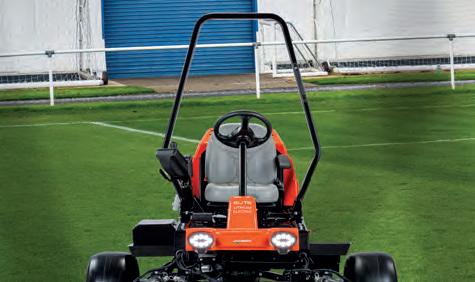


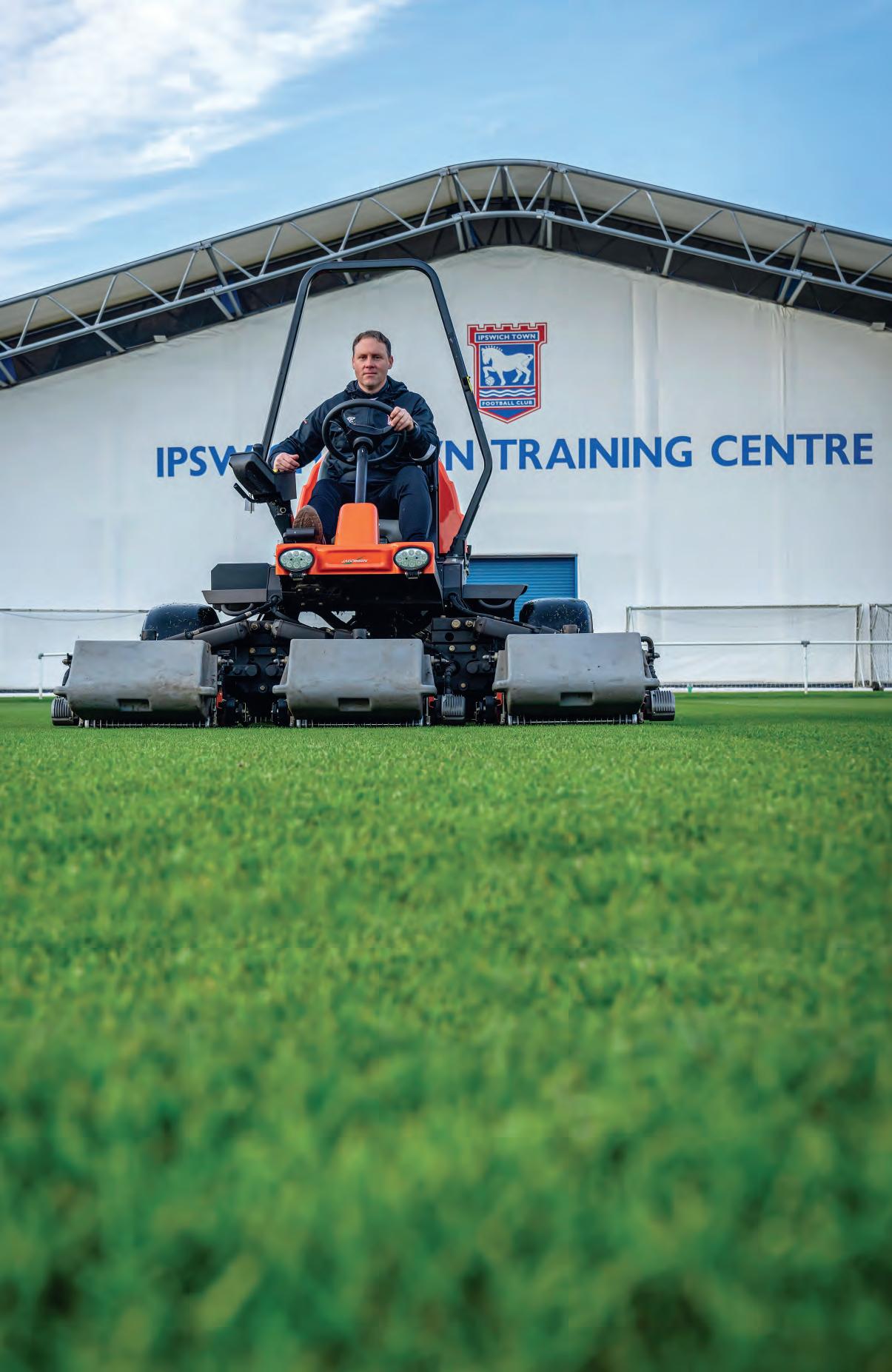
For the past year, the world’s first Jacobsen SLF1 ELiTE lithium five reel mower has been in use at Ipswich Town Football Club, and the near-silent vibration-free experience has been a game changer.
Head of Grounds Ben Connell and his team have put the machine to work at the club’s Playford Road training ground as part of the unit’s development phase. A 40% reduction in fuel and parts, an enhanced user experience, and the multiple benefits of silent operation have all been standout factors during the 200 hours of use.
The SLF1 in action
Ben explains: “Everyone wants to jump on the SLF1 and use it. The team enjoy using the machine because it’s less fatiguing when sitting there with no noise. It’s just a much more pleasurable experience.”
“We’ve had it out a lot of days to get the 200 plus hours, and some days we’ve had it going all day, and the battery was great. I’ve never had a problem where we’ve run out of battery anywhere on the grounds. The team brings it back at lunchtime, plugs it in for half an hour, and it keeps going for the rest of the day. Then we charge it overnight, and we’re good to go the next day.”
40% reduction in maintenance costs
While the user experience on the machine has been greatly enhanced, Ben has seen massive benefits off it as well. With no filters, oils or fuel to deal with, the maintenance time and associated costs have decreased.

5.5 Hours Run Time on a Single Charge No Exposure to Hydraulic Oil Reduced Fuel and Part Spend by an estimated 40%


“I’d have a guess that our maintenance costs have reduced by 40%,” Ben explained. “We don’t have the oil filters, so we’re saving on those and other parts, and you then don’t have the waste products you get from changing them.”
I’ve never had a problem where we’ve run out of battery anywhere
The SLF1 ELiTE is a long stride forward for Ben’s ambitions to be the world football first emissions-free grounds department. With Jacobsen, Cushman and E-Z-GO lithium technology already being utilised by the team, Ben has planned solar panels for a potential new grounds shed. These panels would recharge the batteries overnight, effectively making the next day’s operation cost-free.
“We’ve also received fewer fuel deliveries because our consumption is lower, so it’s a winwin for us going forward.”
“Maintenance-wise, with the lithium batteries, it’s so much simpler because we’re using the computer system. Any faults are plugged in and solved without having to crawl underneath machines to try and find them, so we aren’t exposing ourselves to oils and all the dirt, grime and other carcinogenic materials that come with them.”
No longer the noisy neighbours
Like many sports facilities, houses surround Playford Road, and noise complaints are common. The low 72 Db noise output from the SLF1 ELiTE has meant the grounds team can cut early in the morning before training without causing any disruption.
“We’ve had issues in the past where we’ve wanted to cut early on Saturday or Sunday mornings, when the pressure is that we’ve got football training or a game, and we need to get out with the mowers, but we’ve caused a noise, and we’ve had a few phone calls,” Ben said.
“Now we’re going out at weekends, and the neighbours don’t even know we’ve cut. And I’ve asked them, ‘Did you hear us at the weekend?’ and they’ve said, ‘Oh, we didn’t realise that you’d come out.’ And that’s the answer you want.”
To experience the SLF1 ELiTE for yourself, contact your local Jacobsen dealer. Visit www. jacobsen.com




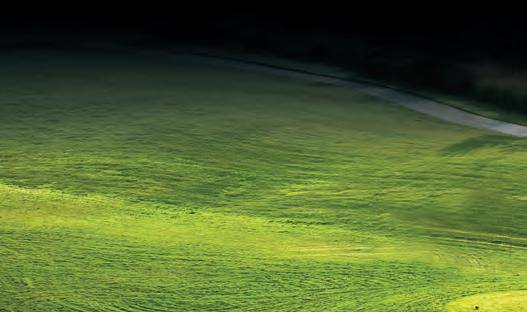













One day I took a step towards something scary and unpredictable, fraught with danger and offering little hiding place… I went outside.
AsnippetfromanarticlebyCharlieLuff
Icount myself very lucky to work outside all the time for my job, enjoying all the sights and sounds that nature has to offer including seeing such beautiful sunrises in the morning as I start the day.
I could never work in an office, I just love the outside too much. I have always been interested in birds, but since I started work as a Greenkeeper in 1990, I have come to realise just how special golf courses are for wildlife. To be able to enjoy so much of nature as part of your job everyday is a fantastic feeling. Being outside is good for your mental health, it means you can enjoy the fresh air, the scenery and the wildlife, It is relaxing and helps to soothe away your troubles.
Work can get quite busy on the golf course in the late spring and early summer, but when you can, just stop, take a deep breath, look and listen. What can you see? What can you hear?
Appreciate your surroundings and the wildlife you share it with.
I would highly recommend that you get up extra early one morning and go for a walk, whether it is the golf course or somewhere else and take in the spectacle that is the Dawn Chorus. It is simply wonderful.
Pause, and think for a moment. What would it be like if we had a world without birds? Birds we might be familiar with here in the UK, like the sound of the cuckoo in the spring, the distinctive call of herring gulls by the coast, a blackbird singing on a nearby roof, the beautiful song of the skylark or the hoot of a tawny owl. Imagine all those birds gone; silence. I for one think the world would be a much duller place without birdsong.
(taken from Birds and Bird Songwww.theconservationbuddha.co.uk/post/ birds-and-birdsong-ring-the-changes)
© Patrick Cashman rspb-images.com

Research has shown that people with a strong connection with nature are typically happier in life, as nature can generate many happy emotions, including calmness, joy and creativity.
Remember, when you are out and about, whether it is the golf course, your garden or the local park, STOP, take a few minutes out of your normal routine, LOOK, what can you see around you? And LISTEN, what can you hear? Take time to appreciate what is around you and what you are sharing your world with.
mentalhealth.org.uk/explore-mentalhealth/a-z-topics/nature-and-mental-health
Try this link on You Tube and spend ten minutes listening to nothing but bird sound and see at the end if you feel more relaxed!
www.youtube.com/watch?v=H1iboKia3AQ

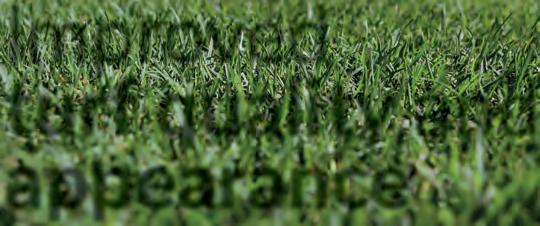



the occurrence of red thread.


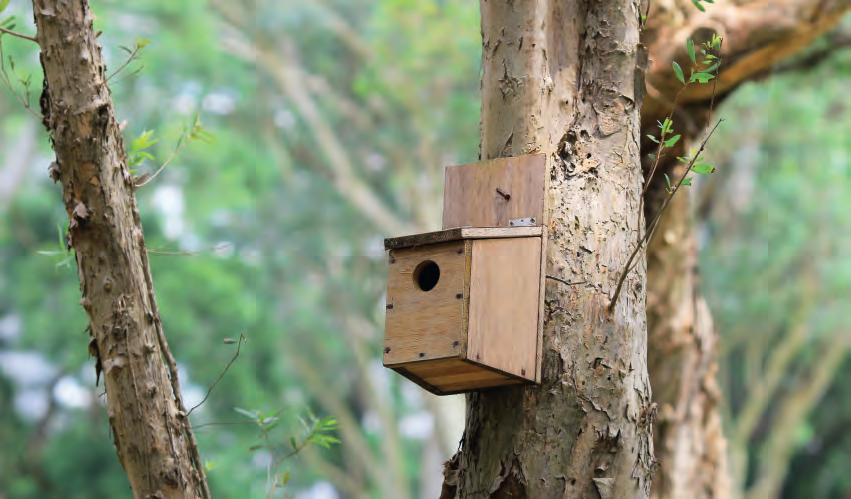
AnothersnippetfromCharlieLuff’sBlog:
Walking with purpose and a growing awareness of the power and enormity of nature all contributed towards feeling more alive.
I for one certainly feel more alive around nature.
Coming into May and birds and other wildlife will be breeding, so you might well see much more activity around the golf course or your local park or woodland.
We installed 32 Bird Boxes at Woodhall Spa Golf Club earlier in the year and quite a few have already had birds coming in and out of them. I will be checking them later in May and reporting about in the next issue.
What to look out for in May and June:
• Birds. More summer migrants will be around so keep an eye out for Swifts, Garden
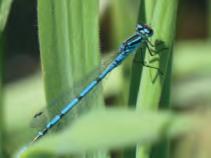



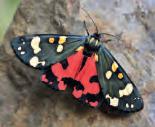

Warbler, Hobby, Willow Warbler & Whitethroat or maybe even a Nightingale if you are lucky enough.
• Butterflies. Green Veined White, Marbled White, Meadow Brown, Gatekeeper & Speckled Wood.
• Dragonflies. As the weather warms up, and particularly if you have water features, you may see some Dragonflies around, keep an eye out for: Large Red Damselfly, Azure Damselfly, Common Blue Damselfly, Banded Demoiselle and Broad Bodied Chaser.
• Moths. One insect that perhaps people don’t see much are the Moths that mostly come out at night, but there are some that fly in the day. Keep an eye out for: Scarlet Tiger Moth, Jersey Tiger, Cinnabar Moth and Garden Carpet. Moths might well be hiding in long grass during the day so if you walk through an area of rough, keep your eyes peeled. Keep an eye out for the next issue of the magazine for more about Moths and Moth Trapping.
To read his whole story about how nature made a difference to him, check out this link: www.theconservationbuddha.co.uk/post/ a-little-bit-of-nature-goes-a-long-wayby-charles-luff
Common Blue Damselfly Azure DamselflyJersey Tiger


Discover unparalleled versatility and strength with Avant Loaders. From lifting heavy loads to maneuvering with precision, our machines excel in turf maintenance tasks. Explore our diverse range of over 200 attachments and unleash the full potential of Avant on your turf.

Optidrive™ drive circuit gives more power for the drive and hydraulic attachments.
Learn more at avant.co.uk
Greater reach with Avant’s signature telescopic boom
It is 35 years since I first started working in the amenity market as a wet-behind-the-ears technical representative for a company called Sierra. A lot has changed from now to then, but none more so than our weather.
I remember delivering a talk to an educational conference over 20 years ago which I entitled ‘Fit for purpose’. I took projections from The Met Office for our future climate and asked how, as an industry, we need to adapt to the predicted change in our climate.
Back then, those Met Office predictions pointed to:
• Warmer and wetter winters √
• Wetter in the north and west, drier in the south and east x
• Hotter and drier summers √ & x
Fast forward to the present day and you could easily argue that we are now managing the impact of that predicted changing climate.
Two images from The Met Office neatly summarise this winter, here is the first:
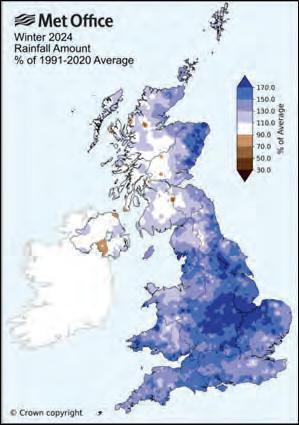
This image shows the % of average rainfall - Winter 2024 vs 1991-2020 average. In it we can see that the magnitude of the rainfall variation this winter is significant, with the scale topping out at 170% of average. Putting that into simple figures, a location that on average receives 500mm of rain over the winter would have received 850mm of rain, that’s an additional 350mm or 14“ in old money.
Looking at the distribution of that rainfall, it isn’t west and north-biased, if anything it is central and easterly-biased. This doesn’t mean that the west wasn’t wet, it just means that the biggest increases in rainfall vs. the 30-year average weren’t in the west, they were in The Midlands, east and north of England and east of Scotland.
Why was the distribution like this?
Well, that is a complicated question and one I freely admit takes me out of my meteorological comfort zone. From an observational perspective, I have noted over the last 5 years, more and more low pressure systems coming in from the south rather than the more atypical south west. These systems also tend to be slower moving and deliver more rain at a higher rain rate intensity.

They are doing this because the jet stream position has sat further south for longer this winter. The image below from tropicaltidbits. com for early April ‘24 shows the low-lying jet stream position (thick blue line) and a veritable succession of low pressure systems working across the southern half of the U.K and Ireland. Quite why the jet stream has behaved like this is the question I can’t currently answer.

The second Met Office image (right) looks at the temperature anomaly vs. the mean temperature for that same time period,1991-2020. Again, look at the scale, we are looking at +2°C average temperature anomaly for the southern half of the U.K, including South Wales.
Now there’s a simple fact, warmer air holds more moisture and so, for any low pressure system that we experience with a warmer air mass, we will get more rainfall and, specifically, more intense rainfall as I have documented in previous articles. For every 1°C warming of the air, 7% more moisture is held in the atmosphere.
More temperature also means more Growth Degree Days, and Growth Potential from a plant growth perspective.
And that brings me neatly to the debate we have to have.
Namely, are we still fit for purpose?
If I look at the plethora of images on social media showing fairways that have 10” of grass because they have been uncuttable since October, course and pitch closures, the loss of revenue, the impacts of this winter cut deep, financially (and mentally) it has to be said. In these situations, you have to say, no we are not. In some cases, and particularly on heavy soil types, our facilities are unable to cope with current climate fluctuations of the like I have detailed, they simply weren’t designed to.
The problem is that to solve these issues takes a significant financial commitment, and it isn’t a one-off. It isn’t just a case of installing more drainage in more areas because, unless you work the surface above that drainage on a consistent basis, it will become capped off by organic matter; so, the commitment is a continuous one if you want to offer playable surfaces in a winter like we have just had. No magic silver bullet solution here.
From a growth perspective, you could apply a wall-to-wall PGR and iron, to hold back the growth and reduce the cutting frequency (and smearing of worm casts at the same time). Again, this represents a significant financial commitment and one you have to make in the absence of knowing whether the coming winter will warrant it. Another tough call.
I don’t have all of the answers, but before we forget what we have just endured, time should be made to sit down, consider and quantify the issues we have faced and determine whether a strategy can be implemented going forward to mitigate the identified issues. Easy to type, harder to do.
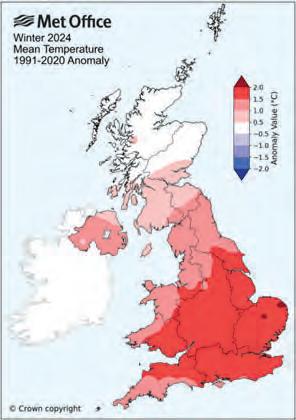





Volunteer Head Groundsman at Melksham Cricket Club, Tim Carpenter, recently won the ‘Outstanding Achievement’ Award from the Cricket World Groundscare Awards, hosted at Lords Cricket Ground.
Tim still doesn’t know who nominated him for the award last April. After years of hard work, he said: “I still haven’t got to the bottom of who nominated me, but winning the award has given me recognition for my commitment and dedication. I don’t receive a salary for the
“I’ve played cricket since the late 80s and I have always had a passion for sports. The groundsman position happened by pure chance.”
“One day back in 2010, the previous groundsman (John Wiltshire), asked if I wanted to help with the pitch. I had already tried my hand at umpiring and playing, so I thought why not try… it evolved from there.”
Tim described how far they have come since
then: “We had very limited resources and budget, so it was really difficult to create a playing surface to be proud of. The developments in terms of finding grants and increasing the budget have helped to turn the pitch around. We’ve had to persevere when things have been tough. Our pavilion was recently restored after it was burnt down, which was a very tough time for all at the club. It’s about community spirit and drive to keep going.”
work, but when someone comes and says how nice it looks or says thank you, that’s the only payment I need.”
When asked about being at the home of cricket, Tim said: “Being at Lords for the awards was fantastic. It was very interesting to be able to visit somewhere with such a wealth of history, and Karl McDermott was fantastic with all of us. He attended the event himself and invited us to look around his shed and all the equipment which was an eye-opener; I learnt a lot from the experience.”
In addition to helping out at the pitch as a volunteer, Tim owns and operates Sparkles Window Cleaning Services in Melksham and going down to the ground can be his escape from normality. “The nicest thing about being in charge of the grounds is being able to escape from the stresses of my day to day work. Rolling the wicket for a couple of hours, or even cutting the outfield, gives you a nice feeling. It is what I call my happy place.” Despite the ground giving Tim an escape, it can be challenging to manage a ground and a business at the same time, he explained: “The main word here is time. I need to manage my business which takes priority and then quite often the weather stops me from getting out at the ground.”


Tim insists that the club is a team effort and credits others who are involved: “My wife is very supportive and even offers to help during the summer months when I go out at 8pm, as she knows that no one else is going to prepare the pitch. Deborah Burns is also fantastic with getting grants for the club, because without those we would not have half of the equipment we have and it would be impossible to produce

a pitch to the level that we have managed to get it to. The committee are also massively supportive.”When asked about not receiving pay for his work, Tim highlighted the bigger picture: “In grounds management you don’t always get it right; that’s part of the process. However, when you get it right and you get the praise, that is payment enough. We had an ex-South African International cricketer come and play here last year and he shook my hand and told me I had done a good job. That’s what it’s all about.”






























Tilly Vesely, Co-owner of Colmworth Golf Club, speaks about how the club have implemented a sustainability strategy straight from the heart.
They must be doing something right, after winning the UK Environmental Golf Club of the Year Award 2024 and England Golf Sustainability Project of the Year 2024!
Sustainability has been something that Colmworth has always tried to implement into their course management. Tilly describes it as “making sense” when discussing why the
club have strived to be more environmentally friendly. “The whole clubhouse is made from reclaimed materials and sustainability is ingrained within the club. That is important; now more than ever. It is also saving the club money, so it’s a win for everyone.”
Sometimes less is more Colmworth is home to several wildlife species and the club has focused on catering for all habitats.
Tilly commented: “While our main aim is to provide an excellent golfing facility for our golfers, we also understand the importance of preserving and enhancing the habitat of our wildlife. We ensure our playing surfaces and areas are well groomed and cared for, whilst still allowing out of play areas to return to natureproviding essential cover and wildlife corridors. It is this contrast between wild and groomed that provides such stunning views for our golfers - this coupled with the surround sound
of birdsong it’s no wonder we have such relaxed and friendly golfers! Rather than fighting nature, we like to work with it!”
Despite the focus being on the landscape to grow and benefit wildlife, it also helps the course in other ways. Tilly explained: “It means that we are having less wear and tear on the mowers. We are using much less fuel and, most importantly for course management, it frees up time meaning we can then focus on the areas that matter most to the golfers.”
Tilly was rightfully very proud of her team for the recent double award wins: “It is great to get the recognition for the hard work that has been put in by the small team we have here. These awards prove that you don’t have to have big budgets to do the right thing for the planet – if anything, it can end up saving money.”







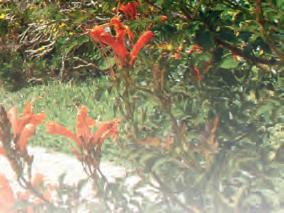







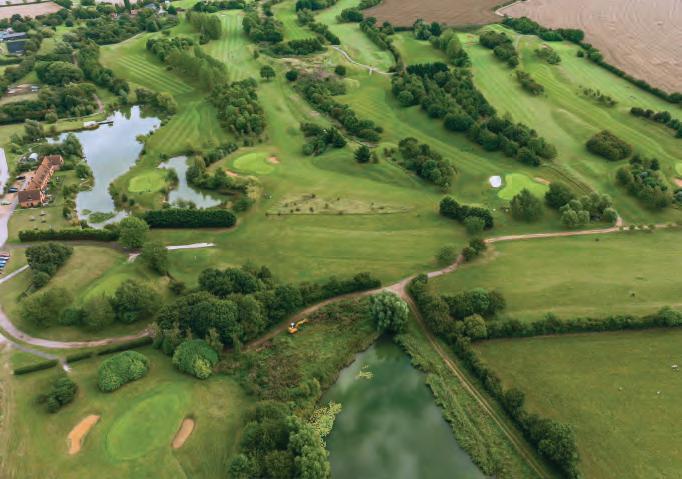
Ro tem facepedis ra quae occum res debis nobitium voluptatur?

Colmworth started the sustainability approach well over a decade ago. For a long time, the club were one of the few adopting the sustainable approach; She said; “We have always been aware that the way we were doing things was slightly different to other courses. At the start, there were some questions about why we were doing it, but it seems now that most courses have started to take the same approach.”
Tilly expressed her joy in being ahead of the curve: “I am glad we stuck to our guns, because I think it is fair to say the industry is changing. Seeing the results of the hard work that has been done since we introduced our sustainable turf care in 2012 is incredible. The minimal maintenance approach means we use very little sand and fungicide. That makes a huge saving for us.” The club has introduced many sustainable products both on and off the course including re-usable recycled aluminium water bottles, sustainable clothing and a solar energy system.”
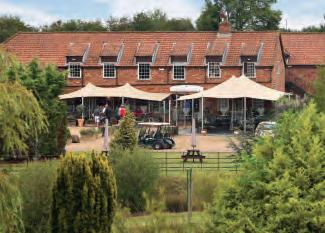
The turfcare at Colmworth speaks for itself and many players are offering regular positive feedback. While not all of Colmworth’s golfers are not fully aware of the course management practises used, Tilly thinks that they are starting to understand more about the importance of sustainable turf care in golf; “Being a proprietary run golf course, our members aren’t actively involved in the management of the golf course, but we do our best to communicate our plans and reasoning to help to educate golfers on the whole.”
She emphasised: “It isn’t just up to the big businesses to cut their carbon footprint… It’s about what everyone can do to help the environment.”
Tilly’s top tip
To conclude our chat, Tilly gave us a tip to take away about sustainability: “Think about everything you are doing and ask yourself - is it good for the environment? Look at areas and think – could we let that grow out and can we plant any wildflowers or native plants to attract wildlife? It isn’t always possible to reuse material, but that would be something I would recommend to all golf courses to try and do more of rather than buying in new.”

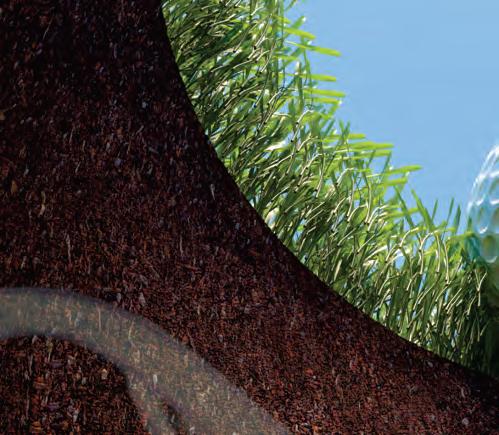


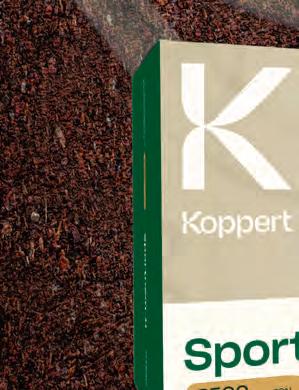


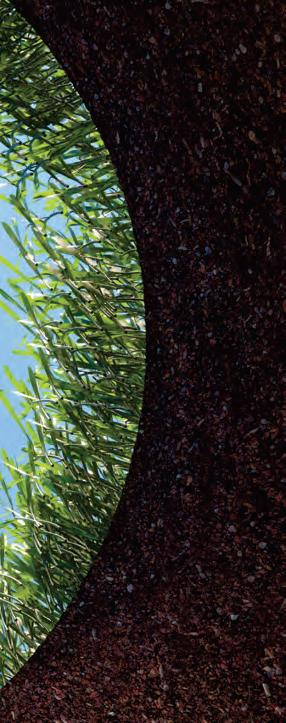
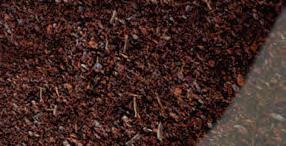

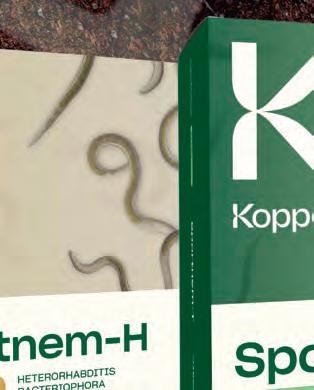
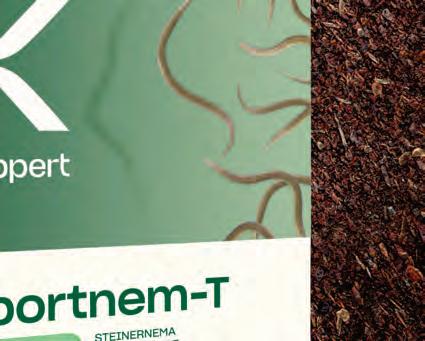







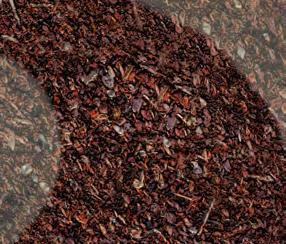


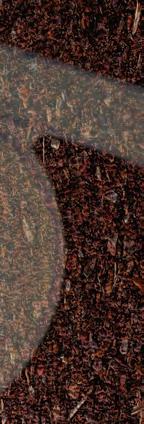

Not only humans enjoy lawns and sports pitches. Crane flies (leatherjackets) and chafer grubs, relish them as well! A good reason why insect pathogenic nematodes effectively combat these major turf pests in a safe and natural way
.
Nematodes for pest control, often referred to as entomopathogenic nematodes or beneficial nematodes, are microscopic roundworms that serve as natural agents for biological pest control. Beneficial nematodes are highly specific in their choice of hosts and do not harm beneficial insects, humans or animals. Common pests targeted by these nematodes include various larval insects like grubs and weevils (Coleoptera larvae), caterpillars (Lepidoptera), fly larvae (Diptera), Thrips (Thysanoptera) and many other soil-dwelling pests.
Benefits of nematodes
Using beneficial nematodes for pest control offers several key benefits. Nematodes are a perfect fit within Integrated Turf Management programmes due to their compatibility with most pesticides. They reduce the reliance on chemical pesticides and promote sustainable and eco-friendly pest management practices.


managers can spray a solution that is full of life
Nematodes are alive; they move through the soil profile and hunt their prey instinctively. And unlike chemical pesticides, which trigger an immune response in pests enabling them to adapt, nematodes remain highly effective over time. Free of concerns about the diminishing performance of conventional pesticides and even pesticide resistance, we can rely on nematodes as a permanent solution for crop protection. In fact, currently only Aceleypryn is approved for use in amenity and sports turf settings against Leatherjackets and Chafer grubs. Unlike synthetic chemicals, nematodes do not leave any harmful residues, which makes them safe for the environment and those who handle them.
Beneficial nematodes use a fascinating strategy for parasitising and killing their host insects. Here’s how they work:
Entomopathogenic nematodes actively search or ambush potential insect hosts. They are attracted to their hosts by detecting clues emitted by the insects, such as carbon dioxide, heat and specific chemicals. Once




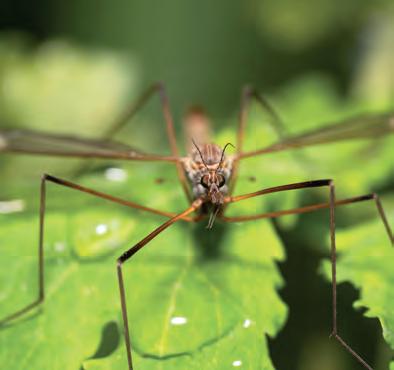
the nematodes find a suitable host, the nematodes enter the host’s body through natural openings, such as the mouth, spiracles (insect breathing tubes), anus or soft cuticle areas. Some nematodes release enzymes to help digest and soften the host’s cuticle, allowing them to enter. Once inside the insect host, the nematodes release symbiotic bacteria, such as Xenorhabdus or Photorhabdus species, into the insect’s body cavity. These bacteria are essential for the nematode’s parasitic strategy. The bacteria quickly multiply, causing septicemia (a lethal blood infection) in the host insect. The bacteria secret toxins and antimicrobial compounds that kill the host insect within a few days. The host becomes immobile and eventually dies due to the bacterial infection. The nematodes feed on the multiplying bacteria and absorb the nutrients released by the bacterial activity. This provides nourishment for the nematodes and supports their reproduction. As the bacterial population within the host insect continues to grow, so do the nematode populations. The nematodes reproduce,
Above
Nematode in insect

Nematodes emerging from the insect
Nematodes enter insect
Nematodes release bacteria, host dies
Development of nematodes inside insect
developing through multiple juvenile stages into mature adults. Finally, after consuming the host insect’s tissues and the bacteria, thousands of new nematodes emerge from the dead insect’s body. These newly emerged nematodes are now ready to seek out new hosts and continue the cycle. The nematode population will slowly decrease once there are no new hosts present but will be active for up to two weeks if soil moisture levels are maintained.
What species of nematode to use Steinernemacarpocapsae is effective against a number of turf pests, especially the larvae of crane flies (leatherjackets). The crane fly goes
through six stages of development: the egg stage, four larval stages and an adult stage. Adult crane flies only live for a few days. Some species have one generation per year, while others produce several generations in a year. This means that larvae can be found and can do damage year-round. Steinernemacarpocapsae is an ambush forager, standing on its tail in an upright position (a process known as nictatation) near the soil surface and attaching to passing hosts. As an ambush forager, Steinernemacarpocapsae is especially effective when applied against highly mobile surface-adapted insects, and below-ground insects are also controlled by this nematode. This species can sense carbon dioxide production, making the spiracles a key portal of entry into its insect hosts.
The insect pathogenic nematode Heterorhabditisbacteriophora can be used against chafer grubs in turf. These grubs immediately start feeding and are fully grown by autumn, causing extensive primary and secondary damage caused by birds and badgers. As soil temperatures drop, grubs stop feeding and go deeper into the soil. During spring, they crawl closer to the surface, pupate and emerge as adults in May/June. Heterorhabditis bacteriophora nematodes boast a deep-moving active-hunting, with a cruising characteristic,
Good timing and application of nematodes is crucial. The application of beneficial nematodes is a straightforward process that ensures they come into contact with the target insects. Nematodes can be applied by foliar or soil application, depending on the target pest.
• Choose the right nematode species tailored to your specific pest problem
• Determine the required nematode quantity based on the infestation severity and treatment area, and as indicated on the product labels
• Store nematodes in a refrigerated environment to maintain their effectiveness until the day of application
• Create a nematode suspension by mixing them with water following provided instructions
• In case of soil application: Ensure the soil is adequately moist (not waterlogged) to facilitate nematode movement. Also take the soil temperature into account

• In case of foliar application, the air relative humidity is another important factor to consider to maximise success (>75%)
• Ideally, apply nematodes during periods of moderate UV light, such as early morning or late afternoon, and avoid high sun intensity
• Spray nematodes evenly using various methods like sprayers, irrigation systems, drones etc. to help nematodes reach pest larvae
• Consider follow-up applications based on pest severity and nematode species
• Monitor and adjust your treatment plan as needed
• To ensure the best results, it is reccomended that nematodes are applied when the relative humidity is high (>75%); applied early morning or evening when solar radiation is low and when temperatures are ideally within 15°C – 25°C
• Nematodes can be mixed safely with water that is at pH values between 3-8 and EC values up to 5
• To ensure that nematodes can penetrate the turf surface an adjuvant such as Agrovista’s NemaFlow can also be used.
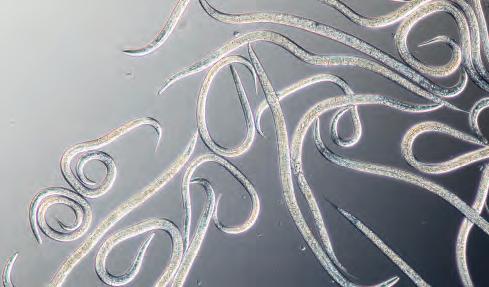
which make them superior to many other species for grub control.
Nematode formulation
Nematode solutions are sustainably packaged and water soluble. The nematodes are kept dormant until they are ready for use, which extends their shelf life to several months. Recent developments have enabled Koppert to eliminate microplastics from its nematode products. Once mixed with and activated by water, nematodes can be applied by using standard spraying systems.
Enormous potential
The potential of beneficial nematodes to support the transition to integrated turf management is enormous. The opportunities for replacing

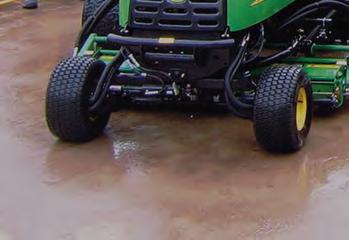
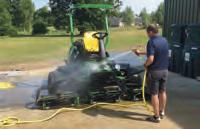
conventional pesticides with natural, living alternatives will only continue to grow. With beneficial nematodes, turf managers can spray a solution that is full of life! free of residue and ready for a 100% sustainable future in the amenity and sports turf sector. Fundamentally, the use of nematodes in an integrated turf management programme will ensure that the amenity and sportsturf sector is addressing the key issues in land management as well as ensuring that this sector is managing turf in a sustainable manner and with the utmost level of consideration for the environment.
Koppert have put endless efforts into research and development. The result is an innovative nematode spray solution, which acts as an effective alternative to its chemical counterparts today and addresses the push towards sustainable turf management in the future. For more information visit www.koppert.co.uk







Sometimes life is about taking a risk. That’s exactly what Craig Eccleston did back in 2019, as he moved 200 miles from Yorkshire to Edinburgh to pursue a new adventure as Head of Grounds at George Watson’s College.
The adventure didn’t go without a few bumps in the road though.
Craig had been with his previous employer for 22 years and told us why it was the right time to make the move: “I had a strong desire to do something different. I have some Scottish ancestry and have been to Edinburgh a few times so, when I saw this position advertised, I just went for it. It was a huge risk, but now I see it as a reward.”
While discussing turfcare, Craig highlighted the importance of being open to learning: “You are constantly being educated in this industry. My friends and mentors have been in this job for twenty years longer than me. They know things that I don’t and I probably know things that they don’t, but we are all still learning from each other.”
He also mentioned the usefulness of speaking to other sectors: “You can pick the brains of the grounds staff who might be working in a different environment – which is why trade shows are important. I encourage the team to ask questions and they can then pick information up about different products.”
A spanner in the works
Craig started work on 3rd of February 2020 and, just four weeks later, the country went into the first Covid-19 lockdown. “It made the transition period hard, but the college supported me. I went back to England because my family hadn’t moved at that point and then, when I returned to work, I travelled home to Yorkshire for a few weeks whilst on furlough.”
A key challenge for Craig during this time was interacting with his team: “Social distancing


Above Craig took the plunge into cold water therapy as he joined a mental health group.
was strict and some of the team were on furlough; it was a very interesting eighteen months. The college stayed open for the key workers’ children, meaning we had some jobs to do, however we didn’t have any sports fixtures to prepare for.”
Away from work, the lockdown also hampered Craig in exploring Edinburgh: “I couldn’t go and meet anyone and I couldn’t play golf or watch the rugby at the pub. For the first 18 months, it was a case of going to work and then going back to the flat.”
Craig turned to exercise to help him stay positive during this time. However, the main


It was a huge risk, but now I see it as a reward
Despite Craig’s focus being on George Watson’s College, he has also jumped into volunteer work at Murrayfield. As a fan of rugby, this was a great opportunity for him to spread his wings and experience grounds management in a different environment: “I have enjoyed the volunteering. My youngest daughter sometimes comes with me and she enjoys it as well. One day she might be a groundsperson; we will have to see!”
Craig took the plunge into cold water therapy as he joined a mental health group - The Edinburgh Blue Balls. He told us how the group has benefitted his well-being: “I found the group fourteen months after the move to Edinburgh and I try and go at least once a week. I used to play a lot of rugby, so I have always been in big groups of males where you can have a laugh and speak to others. The group has taken that place in my life and it gives me an escape and the opportunity to engage with people from different cultures and jobs.”
He continued: “We have social events, which is usually when we sit and talk about any problems we have at work or in our personal life. I wouldn’t say I struggle with my mental health, but like anyone, I have good and bad days. Going and meeting up with those guys allows me to get that release.”
support came from home: “I was calling the family a lot. I spoke to my dad four times a week which helped to keep me sane. He has always supported me and ensured I was doing the right thing. It was a challenging period, but sat here today, I can say it was the right decision.”
The benefit of a good support system Despite the challenges that came with the move north, Craig had the consistent backing of those closest to him: “My wife was supportive of the move to Edinburgh and she pushed me to try something new. My parents were also very supportive of the move.”
Craig had to consider the impact that it would have on his whole family. Despite his daughters initially being sceptical about the change, they soon settled into city life. He explains; “My girls were worried about leaving their friends behind and we had some ups and downs with that. They both love the city now and they have more activities available compared to the countryside.”
Craig also credits his employers for the support shown during a tricky start to his new role: “My wife was self-employed before making the move and the school asked her to do some work. My youngest daughter came to the school and spent two years here. They have been supportive of the whole family.”

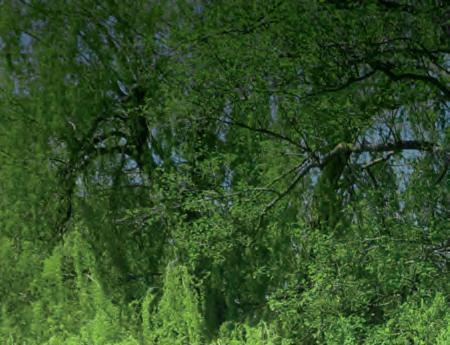







Volunteers are essential in the presentation of the garden






theSet in the North York Moors National Park, Helmsley Walled Garden has vibrant borders, glasshouses and apple orchards.
Bu ilt in 1759, the garden sits beneath the imposing ruins of Helmsley Castle and has been welcoming visitors to North Yorkshire for over thirty years.
The National Community Lottery Fund has awarded Helmsley £130,000 to train volunteers in plant propagation. The money for the garden, which has more than 100 volunteers, will be distributed annually for three years.
Executive Director, June Tainsh, said: “Funding will be used to establish and deliver a brand-new project at Helmsley Walled Garden called ‘Learning to Grow’. This is a propagation project and the fund will enable the garden to employ an additional staff member four days per week, plus pay an apprentice to work on the project. Our new apprentice post will be offered to a different individual each year for the three-year term of our project. We plan to ensure that younger people facing barriers to employment in the area are given this opportunity to help move them into paid work. The project will also engage a few new volunteers who have previously faced barriers to volunteering.”
June added: “Volunteers are essential in the presentation of the garden, just as the garden is essential in the lives of all our volunteers. We do not employ a head gardener as such, but all our staff are horticulturally trained, however our job is to support our volunteers in gaining both confidence and new skills. We employ four volunteer coordinators who match tasks to
individuals, encouraging all our volunteers to be involved with the garden to the absolute best of their abilities.”
She reflected on the challenges of Covid-19: “We were fortunate enough to have survived some very challenging times in the wake of the epidemic. Our wonderful supporters donated to the garden to the tune of £60k through an appeal that was created to keep the garden open. In addition, we received Heritage Lottery Emergency Funding and both of these funds kept us on our feet during 2020/2021.”
June wants the walled garden to be a hub for the community: “Helmsley Walled Garden is very much respected and admired by its local community. Those who live within a six-mile radius of the garden can buy a reduced-price annual pass, which means they can visit any time throughout the year for free. Local charities, such as Ryedale Sight Support, are encouraged to have days out in the garden and local schools frequently visit the garden for outdoor lessons.”
Horticulture creates bonds for life: June concludes: “We see incredible friendships formed at the garden amongst our volunteers. Many, who first came to us lacking confidence and doubting their abilities, have blossomed under the support and encouragement of our volunteer coordinators. In turn, this has led to some of our volunteers moving on to full-time employment.”
Helmsley Walled Garden will continue to support the community and youth through horticulture.

Above Changes to the Grand National track ahead of the 2024 race to improve safety were a great success, but required additional turf renovation and fence building work.
Right
The darker fresh turf showing where the first fence previously sat; low organic matter in the surface and the risk of compaction means that getting the sward to establish is an ongoing task.
The Grand National is dubbed ‘the people’s race’ with good reason, but is therefore also subject to intense scrutiny by those outside racing.
Its home at Aintree is also part of an industry which is facing common challenges, from funding and participation to climate change.
It’s the challenge willingly tackled by Clerk of the Course Sulekha Varma and her 12 strong team, a number that expands to around 250 on the big day itself, with help from other racecourse staff from the Jockey Club group plus casuals.
After the 2023 Grand National, Aintree’s annual review process was extended, she explains.
“We brought in a number of different parties – the British Horseracing Authority, trainers, jockey and animal welfare organisations, including World Horse
Welfare, and produced a paper outlining recommendations to improve safety.”
The first was to reduce the number of starters, recognising the fact that following changes some ten years ago to make the fences themselves safer, jockeys tend to ride with greater confidence, picking the inside line and bunching together. The race is also faster due to the higher quality of horse that now takes part. Having less horses in the finite area available reduces risk.
Taking these factors into account, some changes to the course needed to be made. While the well-known Becher’s Brook and Canal Turn have been modified in recent years, analysis of incidents highlighted fence 11, which is also the final ditch jumped on the last circuit.


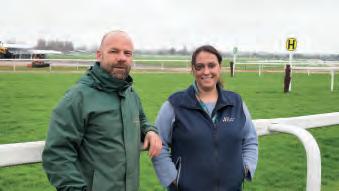

“There was a drop on landing, and having levelled the landing to other fences we felt this one also needed adjusting,” Sulekha explains. “We decided to build up the landing side rather than reducing the take off and this was carried out in August 2023.”
In addition to the construction work which included installing drains and a soakaway, the establishment of the new ground takes time, she comments.
“The soil has no organic matter, so you have to work hard to keep the surface open so moisture can penetrate. We’ve verti-drained it a lot and used an Earthquake in the spring.”
A second recommendation was to move the start closer to the first fence, recognising that once this obstacle has been jumped, the pace starts to slow. However, this was not just a matter of moving the starter’s rostrum.
“We couldn’t move it forward because of the proximity to the Melling Road and the Mildmay and hurdle course start, and as you go closer to the first fence, the track narrows which would make it difficult for the horses to line up safely.”
Thus, the fence was moved back towards the start, which also gives a longer run to the second, allowing a horse that jumps badly to get back into a rhythm before jumping again.
Moving a permanently sited obstacle involved digging out the fence frame and rebuilding the structure of the Easyfix base and birch infill. The previous site then had to be repaired and turfed.
“Again, there’s considerable work involved to maintain the disturbed ground,” Sulekha comments.
“Getting the consistency is the most difficult part,” comments Stephen Fyles, drafted in as acting head groundman from Haydock (see panel). “The soil goes very tight, so to keep the new turf rooted and sustainable is tricky.”
The build-up to the Grand National starts immediately after the Christmas break with the arrival of materials for the many temporary structures used for hospitality; three weeks ahead of the meeting, the site goes into lockdown for health and safety reasons.
Sulekha continues: “When fixtures were being planned for 2023, I felt strongly that we should give up our June meeting. The soils are very free-draining and the work involved to produce safe ground outweighs the benefit of holding a meeting for 30-40 runners.”
“ In 2023, Aintree swapped a summer jumping meeting for a key winter fixture. We looked for a date that would be beneficial and commercially viable, hence the introduction of

Above Left Removing turf to carry out levelling works.
Right Regrading and levelling the landing side of the fence.
the Boxing Day meeting. We have a really good customer set and we hope it will become a Christmas tradition for local families.”
With the aim for quality racing high on the agenda, Sulekha adds that Aintree was pleased to be awarded a Grade One Novice Hurdle in changes to the jump race pattern which turned out to be ‘a fantastic race’.
A three-week gap between Aintree’s Becher Chase meeting in early December and Boxing Day gave enough time for renovations, and she points out that the course generally has better ground than elsewhere at that time of year.
Not that the relentlessly wet 2023/24 season has been without its challenges, she admits.


National, wet conditions persisted and delayed the preparations.
“I’m quite relaxed about wet weather,” commented Sulekha, “We always prefer natural rain to irrigation. But we never rule out the fact that we might have to water as a warm breeze can dry the course out very quicky.”
A pair of Briggs booms and a raingun are now complemented by pop-ups around the Grand National course and on the home straight of the Mildmay (traditional steeplechase fences) and hurdle tracks.
Below Grandstand view just before Aintree becomes a closed site in the final preparation stage.
“We had to inspect the National course (used in shortened form for selected races at other fixtures) for the November meeting as there was standing water in places - while the drains were doing their job, the river and canal were up.”
Steve comments that renovations were intensive between the two December meetings, with up to 120 tonnes of soil used to fill divots on both courses, taking five days for the repairs.
Even in the final countdown to the Grand

“We planned to extend the pop-ups into the back straight, but this was halted by the poor weather,” comments Stephen Fyles, “It will now be carried out over the summer. Pop-ups have cut five hours off the time taken to irrigate and allow us to make best use of the Briggs on the home straight.”
Water efficiency is under scrutiny, and Steve points out that former Aintree head groundsman Adrian Kay reports water savings of up to 50% at York by using pop-ups.
Assistant head groundsman Simon Barker comments that the team were able to get on with fertiliser application in a brief dry spell –just before a new spreader arrived – with liquid used to green up ahead of the National meeting.
The Jockey Club’s agreement with Headland/ ICL sees Xtend 15:5:15 as the granular of choice, with good results also achieved from Proturf, and on the chase course, Sierrablen.
A perennial ryegrass sward, the turf is kept at 10cm so has resisted disease well over the winter, Simon says, and once the cutting process starts, the fresh cut grass is ready to go again.
The large amount of equipment needed to maintain the extensive turf areas spills out of the impressive machinery complex, which also houses the grounds team’s canteen and offices.

The preferred supplier agreement with John Deere provides tractors, but Ransomes wide area mowers are tasked with grasscutting, with two new MP653 XC models arriving in March.
“These give a 4.3m cut, but at just 2.5 tonnes have a lighter tread than a tractor mower,” Steve explains. “Mowing is one of our most timeconsuming operations and we have to time the cut cycles to suit the ground conditions;
in the peak season, we can be mowing three times a week.”
The two machines at Aintree can put in 60 hours a week between them, he points out.
The aim is to rotate the cut direction to help the sward stand up; moving rail facilitates this, as does the ability to lift the wings on the Ransomes; Stephen comments that altering mowing patterns also minimises sward flattening from wheelmarks.
“We used an outfront rotary on a tractor at Haydock, but we’ve seen a big difference going to a ride-on, although you obviously lose the
Small details for safety: Toe boards are now made of a rubberised material.
Foamstream’s unique blend of hot water and it’s patented solution is used by some of the biggest names of football for their weed and moss control on artificial surfaces.







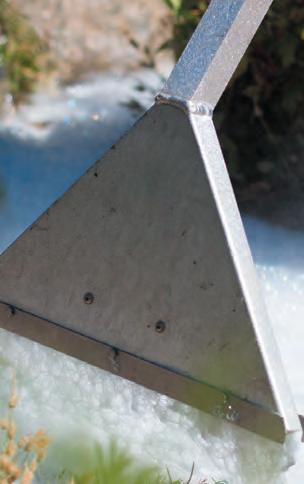
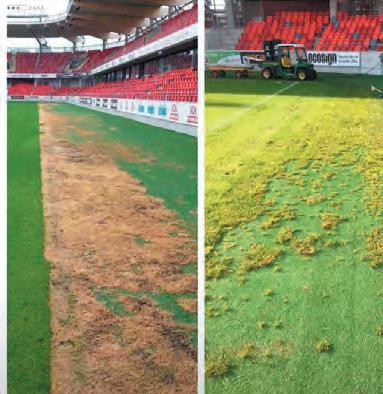



Speed, precision & easy operation. 11 different models, 30 years’ know how and expertise. Be it extra deep, super light or the nation’s favourite GXi8 HD, we’ll find your Terra Spike. @WiedenmannUK @wiedenmannuk
www.wiedenmann.co.uk 0141 814 3366 for dealer or demo
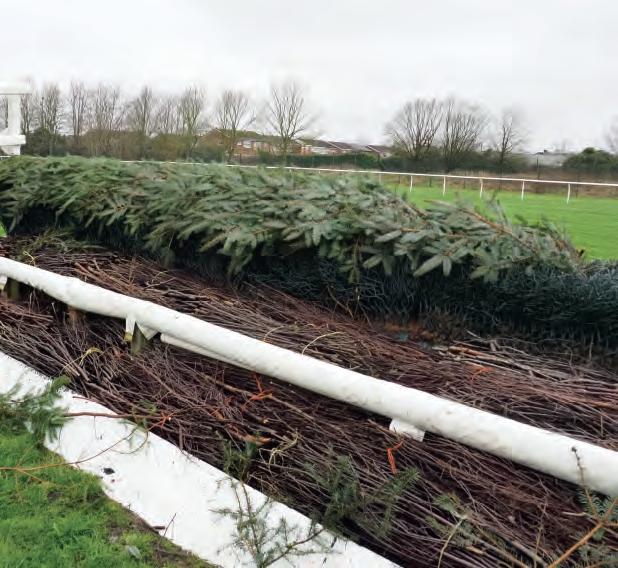
while the Aintree team replace dislodged spruce (it’s designed to fall away if a horse hits it) in each of the 16 Grand National fences.
A total of 18 loads of spruce gets put in place in the final month before the meeting; as fresh vegetation, it has a limited ‘shelf life’.
Water, turf and spruce – the three essential elements that go together to make the world’s greatest steeplechase; but probably the furthest from the minds of the casual punter picking ‘his’ horse’s name from a hat or the paper on the big day.
Recruitment continues to be an issue, even for venues offering the pinnacle of a groundsmanship career, and Aintree is no exception.
“We have been looking to recruit a new head groundsman for several months, and although we have interviewed some excellent candidates they have just lacked the experience to have the confidence to lead the team,” comments Sulekha.
She suggests that Aintree’s location may be one factor, with many of the more senior racing groundspeople having based themselves in
Left The distinctive Grand National fences being prepared: the spruce is laid on top of birch over the Easyfix frame.
Below Ransomes ride-ons are the tool of choice for mowing; this one was joined by two more in the spring.

the south where there are more courses, but retention remains difficult for all.
“It’s an attractive industry and Aintree is a successful business offering good salaries, but it is outdoor work which is not for everyone.”
“We’re very fortunate in that we have a very good, all longstanding team and that Stephen Fyles, who is head groundsman at Haydock, has been able to stand in here at Aintree.”
She adds that in turn it has offered the opportunity for Stephen’s deputy at Haydock to step up and learn the role, and while Aintree and Haydock already work closely together, the cooperation is likely to be furthered in the future.
With additional responsibility for the thriving nine-hole public golf course at the centre of the track, the team includes three greenkeepers, a fitter, senior groundsman, assistant head groundsman Simon Barker and an apprentice.
Sulekha’s role has also shifted slightly, with the appointment of Clerk Harry Phipps at Carlisle allowing her to focus on Aintree.
Stephen is no stranger to Aintree, having cut his teeth there as an apprentice after a stint as a 14 year-old casual at Haydock.
“I also worked at Epsom before moving to Hamilton and then Haydock. It’s slightly odd being back at Aintree and being in charge!”
He’s used to pressure though – Haydock has a two week break between the national hunt season and the start of its flat fixtures, with the wet conditions hindering this spring’s preparations for the flat.
And you couldn’t meet a better advocate for racecourse groundsmanship.
“I just love it. No two days are ever the same, and I get the greatest enjoyment from the presentation of the site to its best. It’s a job that you definitely grow into.”
Article by Jane Carley.

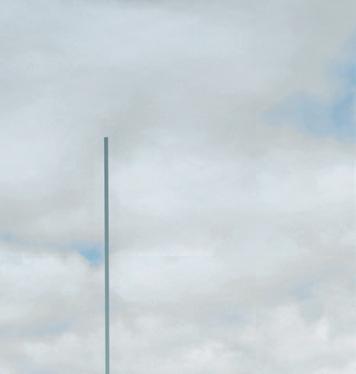




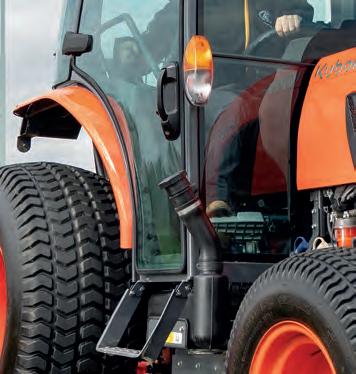
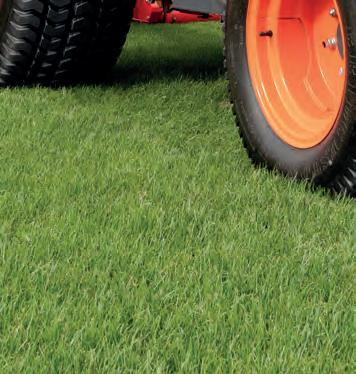
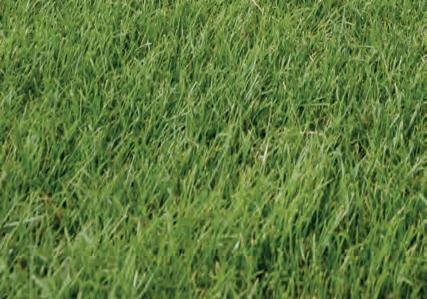

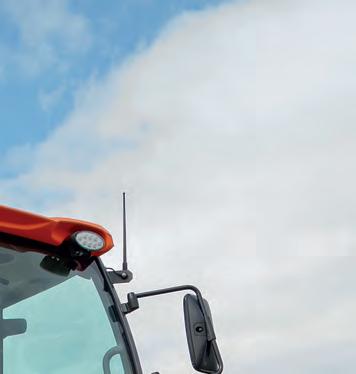

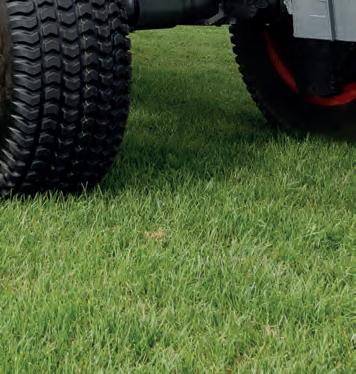
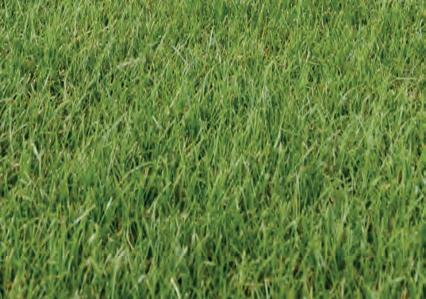



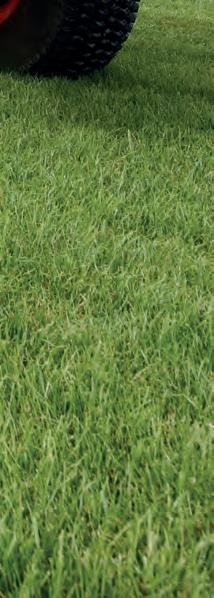




Clevedon
Golf Club
, have been experiencing birds having a buffet on their well-kept greens for some time. They offer some tactics they have implemented to try and stop the problem.
Course Manager Richard
Ponsford commented: “I have been here for nearly six years and we have had problems with birds pecking up the greens every year. The situation is only getting worse and, this year, one of the greens has been annihilated. We have two sides of the course; one side is more inland and the other more towards the coast. The birds have been on both sides and damaged a few of the greens.”
He explained what he has tried so far: “We have sprayed Acelepryn and NemaTrident and both worked to a certain degree. However, the birds are doing something called historical pecking. They are pecking more because they can’t find anything. When I open the turf up, I am not seeing many grubs and the pecking has worsened because of this.”
Stubbornness of the birds
“Crows only migrate from northern climates, so in much of the UK they remain and assemble into groups, but the food has gone because we have sprayed. The bird moves across the green hoping to find something and that’s when you get a problem.”
The crows are proving to be the most stubborn of all: “We have a gamekeeper who shoots up in the morning to scare them away and when you approach them they fly away. They are intelligent though; during the day when golf is being played, they know that the gun won’t be coming out and they don’t move.”
Richard and his team have found it difficult to communicate with members about what has been happening on the greens. He explains: “Last year I told members about us spraying in an attempt to stop the problem. The Acelepryn and NemaTrident had done the job because the grubs were gone, but the birds weren’t deterred however, most of the feedback was suggesting that it hadn’t worked. Therefore, the members couldn’t understand it.”
While the course is closed, Richard takes more extreme measures when attempting to keep the birds off: “The old phrase about hanging a dead crow in a tree does work. That did stop the crows from coming onto the greens. However, when we have golfers on the course, we can’t do that. No one wants to see a dead bird when they are putting.”
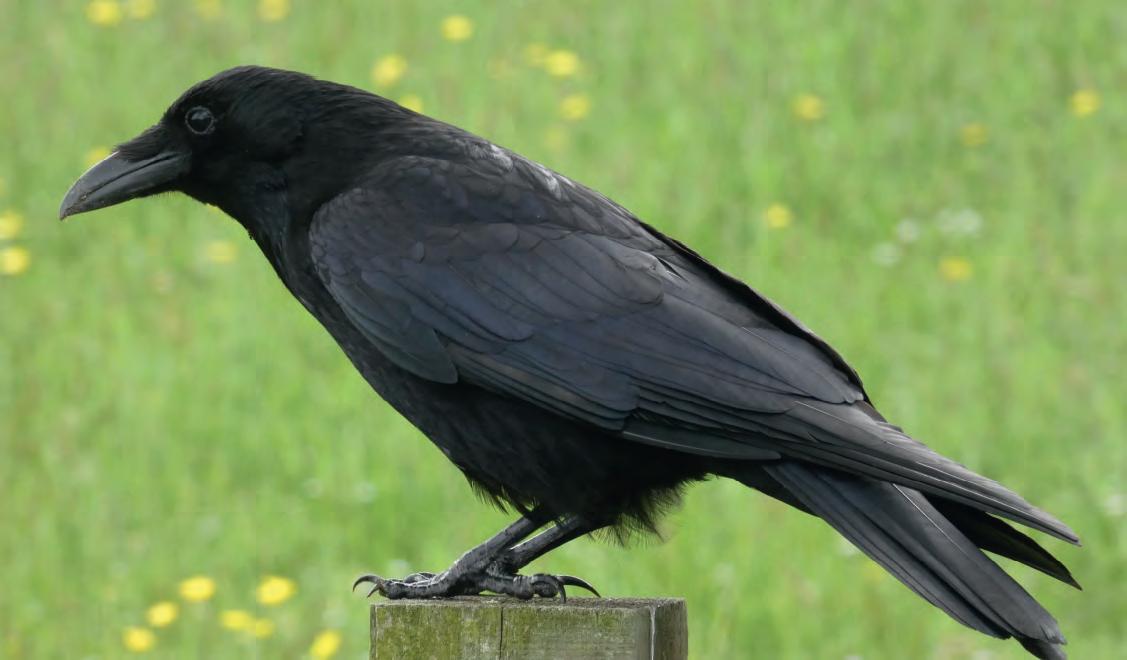

Richard has tried several methods to try and solve his pecking problem. Some of these include using scarecrows, kites, high-pitch noise frequency and spinners. He is positive about these so far: “We have only had a little bit of damage on one of our greens since putting these up. That was also because one of the kites had fallen. It seems that as soon as the kite had gone, the crows were back.”
He highlighted some of the issues which have
arisen due to the new deterrents: “Everything that we have used has done its job but, unfortunately, the scarecrows look unsightly to the golfers. They also say that they are in the way; it looks like a golfer is standing on the green so they question if they can hit their ball.”
Richard concluded with his best advice for those suffering from a similar situation: “If I could go back six weeks, I would have started with the kites, as they seem to be working the best for us. In hindsight, I would have preferred to have spent the money on more kites than the spraying because the kites have stopped the main issue.”
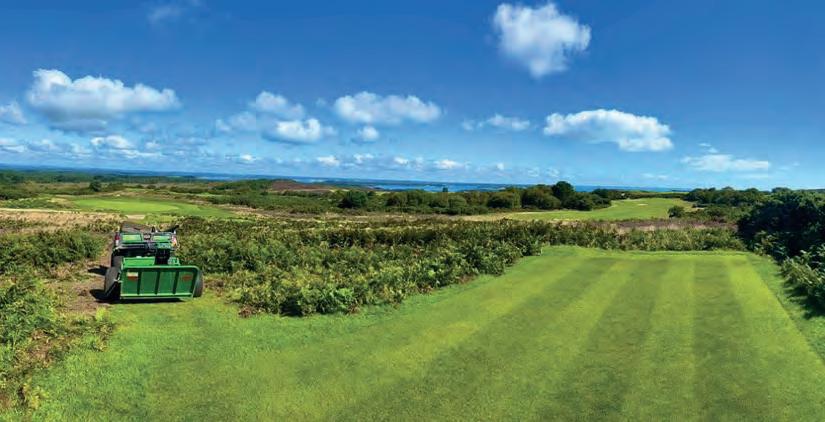
The Isle of Purbeck Golf Club, a heathland links hybrid course teeming with environmental importance. John Hockley is the Head Greenkeeper balancing the expectations of the sport and a highly delicate fauna and flora habitat.
Sited inland along Dorset’s Jurassic coastline, a quarter of a mile between the Studland Bay beauty spot and Godlingston Heath National Nature Reserve, the 18and 9-hole courses contain a Site of Special Scientific Interest (SSSI) among its expansive acres overlooking the sea.
Change is afoot across the area, John reports, as the club pursues a rewilding/habitat restoration programme, which includes tree and gorse reduction, funded by a Countryside Stewardship grant covering up to 80 per cent of the cost. “Also underway is our wetland habitat project, this is designed to encourage a larger variety of insects on to the site,” he says.
As a habitat for the rare Dartford warbler, nightjars and closely situated to ‘the only nesting osprey in the south’, The Isle of Purbeck is a privileged place to work, John knows. “This is National Trust land, once owned by Royalty,
Wilkinson Sword Company and author Enid Blyton and her husband Dr Darrell-Waters. It’s dripping with history.”
With amazing views across the site, he states, “The view from the 5th hole is one of the most beautiful in golf and is one of our biggest selling points.”
With a proud history of Top 100 rankings, the club had “stagnated” by the 1990s, suffering from a lack of investment, John notes, until David Suruki and Kathy Tatar bought it eight years ago. “Many of the greens team had been here a long time – momentum, drive and enthusiasm had waned due to the lack of investment from the previous owners. When I joined in March 2023, only two team members working full time were in place, four working part time,” he recalls.
“The team structure needed changing; it has grown to six full-timers with the final team member joining in June as an apprentice

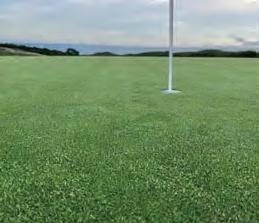
straight out of school. We have a good balance of experience and youth. My deputy, Joe Lamb, is only 31, but worked at Cape Kidnappers, in the world’s Top 200, Woburn and West Hertfordshire.”
The five-year management plan, agreed with Natural England and The National Trust, includes new tees, bunkers and ditches, drainage and irrigation.
John brought in a specialist in heathland restoration to consult on the rewilding/habitat restoration project, which David Langheim oversaw. The team is looking to create scrape areas to enhance ecology and improve the sites ecological diversity, and is excavating a large area to achieve this.
The heather that has been removed will be used to create defining features in other areas of the site. Different types of wetland areas on some of the sandy parts of the site will form ideal habitats for lizards and snakes and create different ecologies throughout the year when dry and sitting wet, John explains.
“We’re creating different environmental habitats at different times of the year, with large areas designed to slow water ingress. We are stewards under an incentive the National Trust is driving. The aim is to develop a flagship for sustainable course management on a unique stretch of land.”
Six holes fall within the SSSI - “the major part

of the five-year management plan.” Rootzones, different cultivars and bunker liners etc, all require approval before use and are all on the ‘to do’ list to foster ‘less invasive’ practices across an area sitting on sand, silt and ironstone.
On the non-SSSI site and the 9-hole course, Broadstone clay predominates, with “limited depth of topsoil. Verti-draining down six to eight inches finds us striking boulders which we are looking to shatter or remove out of the surfaces so we can drive root growth”.
Surprisingly perhaps, John is not pursuing the electric route as machines may struggle in the rough terrain, he believes. “I’m a massive advocate of electric course machinery, but I believe you must be site specific when applying this technology.”
“Between October and February, 1m of rain fell here. With the site sitting so wet and with the current infrastructure at the club, I feel this technology would struggle at present. Although I have great faith in electric hand mowers and hand tools, fairway mowers and transport equipment are not yet bullet-proof.”
Given the extreme sensitivity of the site and surrounding land, it is not a surprise to learn the management plan imposes some strict restrictions to what would be deemed normal maintenance practices. “I’m not allowed to apply nitrogen on the fairways, rough or beyond 100 yards from the greens, it is also highly
Renowned historically as the origin of the dark marble used so extensively for decorative columns in mediaeval ecclesiastical buildings, this corner of the country is carving out a sustainable golfing legacy as truly a ‘Purbeck marvel’.
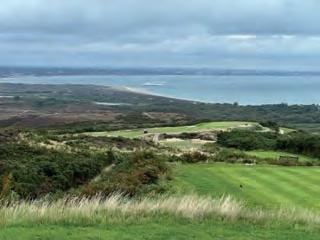
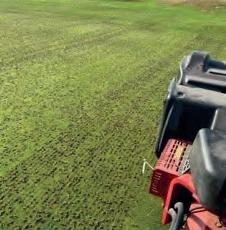

unlikely we will be allowed fairway irrigation,”
John discloses, “although we can spray certain forms of iron throughout the course to suppress moss.”
“Water outlets from the course are tested routinely to ensure limited levels of nitrogen leach into the surrounding heathland and Poole Harbour, as this would change its environmental make-up and encourage invasive algae species.”
“The club had to accept grass loss during the 2021 and 2022 droughts and then spent £18,000 on seed to make good across the fairways and approaches. Our preferred cultivars are tetraploid rye, dwarf rye, perennial rye and fescues which germinate quickly. These are sown into rough and fairways, tees, and approaches. We sow brown-top bents and fescues into our greens’ surfaces.”
The team manages the Poa – ‘a great sward thickener’ – as well as the traditional ryes, fescues and Yorkshire Fog already there.
“These grasses are used and have thrived in the natural environment and climate in the region,” John says.
“It’s all about consistent practices – broad leaf cultivars can be refined to replicate the performance of the finer sports turf grasses previously mentioned – and investing in the
right kind of cultural equipment and having a progressive team. Producing great surfaces is made easier through shrewd investment and the performance of a highly motivated team.”
Under the rewilding/habitat programme, 12 hectares of gorse are being removed. “We leave these areas fallow for up to a year, then remove any regrowth. The idea is to encourage heather and long grasses, such as natural fescues, to populate those areas and create different wildlife habitats. Mowing less grass and increasing long grass areas forms part of that mission.”
“Eventually, 80 per cent of the existing gorse will go. The first three hectares were removed last winter – it’ll take three winters to complete the process, but we’re leaving the gorse that’s well away from play.”
John’s abiding wish is for continuity across this hallowed land. Governing bodies will shift the goalposts no doubt, he says, but to consistently achieve a 1 to 2 per cent improvement year on year does require “a different mindset”. A case of the Brailsford principle applied to golf course maintenance.
“I can sit in a room with ten greenkeepers,
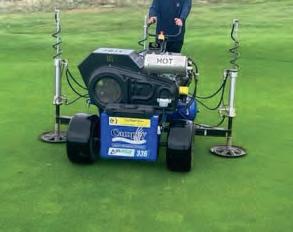

and each will have their own view and opinions on how to achieve the same goals. Each head greenkeeper/course manager will perceive each challenge in their own way. As a passionate golfer, I play plenty of courses and bring back little bits (of insight) to apply here.”
“At the end of the season, we reflect on what worked and what didn’t. I work closely with the owner, who is very hands on, and we have
regular meetings with The National Trust and the RSPB predominantly.”
Communication with Isle of Purbeck’s 300+ full and five-day members, captains and presidents is key, John says. “The Head Greenkeeper is the face of the changes on the site and must ensure everyone knows why something’s happening, via WhatsApp groups or face to face. It stops any negativity at source.”
“Managing expectations is the biggest part of my job.” That said, “the membership welcomes the changes with open arms. They see the long-term environmental benefits of what we’re doing and know this is a great opportunity for stewardship of one of the most unique golf courses anywhere. Although they might question that when playing into the 50mph winds we get here!”
The relationship with The National Trust is an intricate and delicate one, of necessity. “The back of the 11th hole and to the right of the 5th, 7th, 8th, 9th and 10th is all Godlingston Heath, where 4,000m2 of land has been returned to the Trust to graze wild cattle.”
Article byGreg Rhodes.





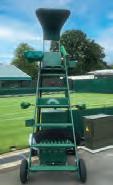
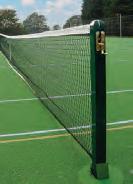




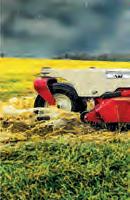
Signing off, John concludes: “I see Isle of Purbeck as a 10-year plan. I’m target driven and aim to take it to a much better place than when I came here.”


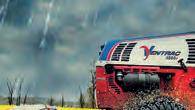












Mike Hallsworth has been Head Groundsman at Bedford School since 2001. Pitchcare spoke to him as he closes the curtain on a 35-year career.
Mike began working in turfcare at Kimbolton School, which is fifteen miles north of Bedford. He worked there for four years before moving to Bedford in 1996. On his first role in the industry, Mike said: “It gave me a good grounding in working at an independent school.”
Norman Cooley had been the previous head groundsman at Bedford for 28 years before Mike took over. Since taking over the role, teamwork has been at the forefront of Mike's management: “We are all here to help each other and support each other. I was passionate about having continuity within the team.”
Like many organisations within the industry,
every place works differently. Mike found this in his transition from Kimbolton to Bedford: “It is a lot busier here. The school have got more boys on site - despite it being a smaller area.”
The state of play: Industry retaining staff
It is no secret that the industry is seeing somewhat of a crisis when it comes to staff retention and recruitment. Mike expanded on this: “A concern for the industry will be finding good young staff who are passionate about turfcare. That seems to be the difficult task at the moment.”
Mike has focused on creating a welcoming and peaceful environment for his staff to enjoy their work. He reflected on the issues with staff turnover when he first started at Bedford: “It


was quite high back in the day, but we have managed to stabilise that now. I have been here for 23 years, and in that time we have only had five people leave - one of which was a retirement.”
He highlighted the importance of achieving a smooth working environment: “Knowing your staff and finding out what each individual's strengths and weaknesses are is crucial. Having a strong team ethic has allowed them to play to one another's strengths.”
Despite Mike having a vast amount of experience, he has always focused on being open to learning new techniques and being ‘teachable’. “Just because you have done something one way for the whole of your career, doesn’t mean that is necessarily the best way of doing it. It is the same with machinery; you might have used the same machine for a job for twenty years, however, there could be something better.”
He alluded to the science of turfcare and how this has developed throughout his career:
“The way that we prepare cricket pitches has completely changed over the past few years. It is very different to what I was taught as a young groundsman. We used to sit on rollers for days on end, but it is much more technical now.”
The pressure on those working in turfcare has risen in recent years, with increased media coverage and increased expectations of the standard of surface. Mike reflects on the school setting: “We are an all-boys school that believes everyone should be involved in sports and everyone gets an opportunity to play in a team. We use an alphabet system and teams often go to the Fs, Gs and Hs sometimes, meaning there is a lot of pressure on the sports fields in terms of wear and tear.”
“We have two cricket squares that settle on rugby pitches, which brings its own challenge. We have used Flicx pitches on those, which has been useful. Spring maintenance is key to maintaining a successful surface, but the cricket season remains as one of the more challenging times for those working at schools. There isn’t enough time in the day to get everything prepared and that can create tension and stress. I usually breathe a sigh of relief at the end of the school summer term.”
Despite the growing pressures, Mike thinks that sometimes the greater the challenge, the higher the reward. “It is very rewarding when it all goes well and the hard work pays off. You look out and the fields look superb and it’s a huge relief.”
It is no secret that budget can be a difficult topic. Mike was diplomatic when discussing the

budget which has been provided by the school.
“Like everywhere, the school faces the same financial pressures as we all do. Whilst I have been head groundsman, the annual budget has had to grow exponentially to meet increased costs. However, the industry has seen machinery and product price increases over the past few years and I cannot expect to get everything I bid for. Having said this, most of the time we get the machinery we need… eventually.”
A key turning point in Mike's career was a fall at work, which caused a severe back injury. He described how the situation affected him and the team at Bedford: “I had the fall while I was pruning on a step ladder and I was signed off

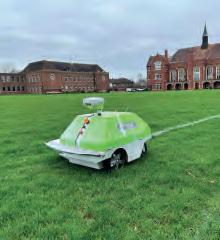
work for three months. During this time, I had total confidence in my team and they did a superb job.”
“Throughout my career, I have tried to trust and empower my team to take responsibility for their work and there wasn’t a single crisis while I was off. In fact, in many ways, the grounds management probably ran just as well - if not even better!”
He also expressed how the injury made him feel personally: “Despite not having any worries or concerns about what was going on at the school, all I wanted to do was get back to work. I didn’t like being inactive.”
Overall, he is looking forward to having more time to do things that he enjoys. Mike is a keen wildlife photographer, which is something he has not been able to do much due to time restraints. He explained: “During the cricket season, I don’t get a lot of free time. It is the time of year that wildlife likes to come out. It will be nice to have this period to relax and wind down and do the other things that I enjoy.”
When reflecting on his career, Mike stated that he will not miss the intense cricket fixtures or having to tell people the field is unfit to play on, however, he will miss the people. “I'll miss the job, but more than anything I'll miss the people. We've worked as part of a team for a long time and forged good relationships.” He also expressed his desire to remain in turfcare - even if it is on a part-time role at the school.

























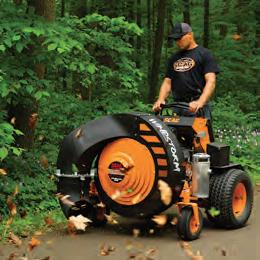

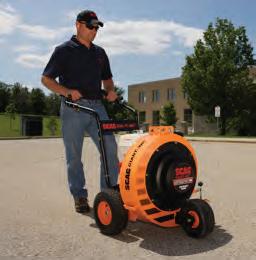
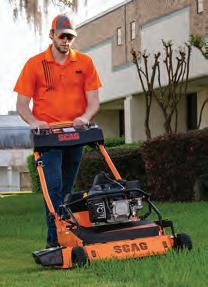
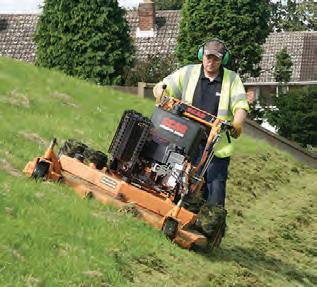

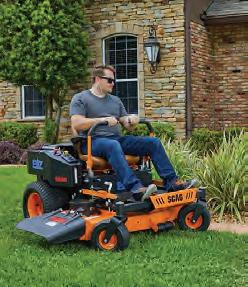


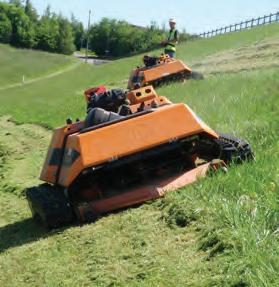






Sustainability has become one of the biggest discussion points over the past few years for individuals, businesses and governing bodies as we hurtle towards the UK’s 2050 net zero target.
For many industries, it’s about making small changes to operations that mean businesses can continue to ethically grow in a changing environmental landscape. The grounds sector is no different, with interest among turfcare professionals and end-users at an all-time high.
Though there’s no hard and fast set of rules or guidelines on what sustainable groundscare entails – yet – knowledge and technology are always evolving, which is great for those wanting to make greener choices and set themselves on a path of sustainability.
Aside from ultimately benefiting the planet, Reesink UK considers that investing time into learning about what sustainable turf management involves now can set businesses up for the future as policies and legislation continue to be passed.
Many clubs and turf professionals have been implementing some level of sustainability practices for a number of years now, but what’s new is the number of large industry bodies formalising serious plans to tackle environmental challenges and influence change.
In its latest sustainability report, the UEFA outlined the risks environmental issues represent for sport, citing that climate-related episodes such as flooding and extreme weather have already damaged football infrastructure and negatively impacted leagues in both professional and amateur football.
In line with The Paris Agreement on Climate Change, the UN Sports for Climate Action Framework, the European Climate Pact and the European Green Deal, UEFA’s subsequent sustainability strategy has sent a decisive and
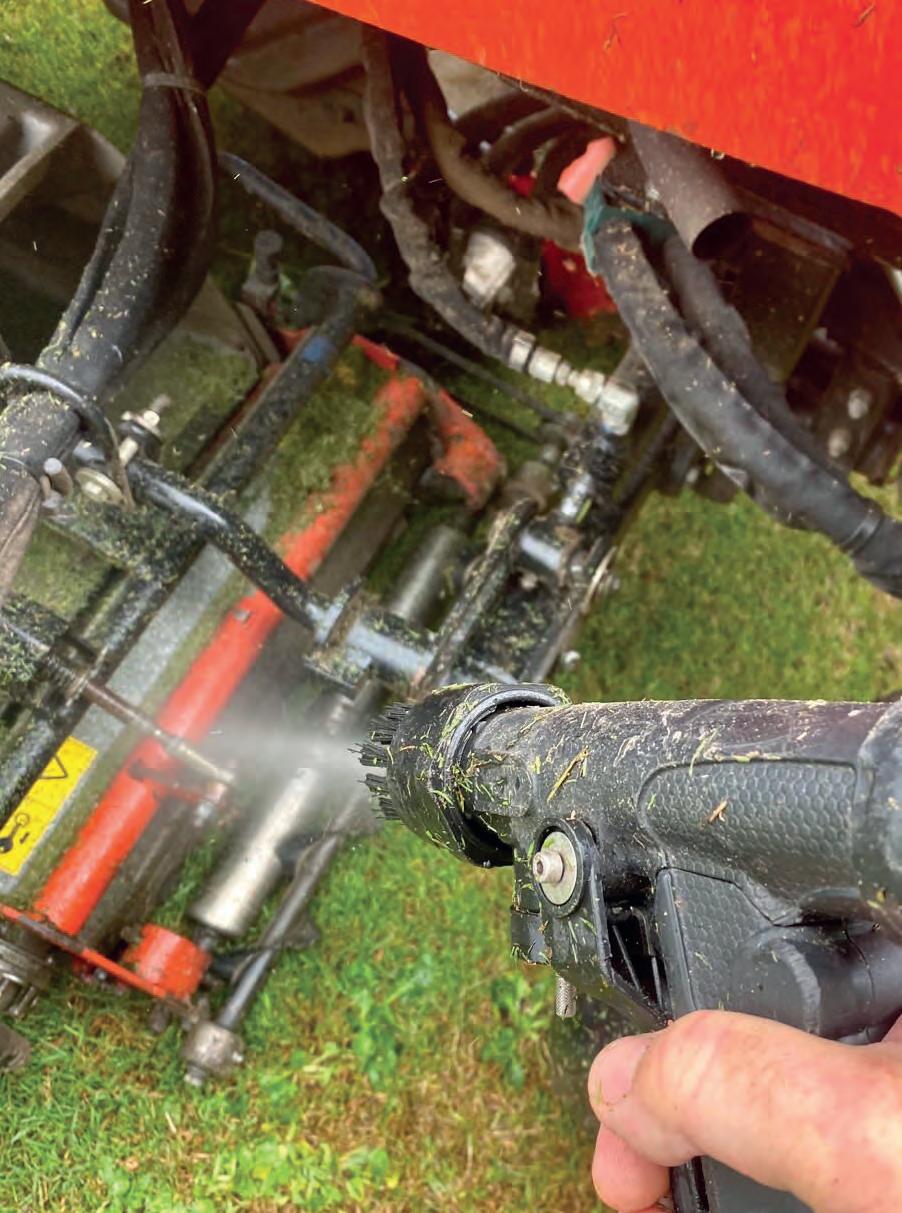
global signal that the transition to a thriving, green economy is imperative.
On a practical level, sustainable groundscare can look like altering maintenance regimes, making a concerted effort to limit the volume of water being used in irrigation, or moving over to more sustainable electric machinery models in an effort to reduce the amount of carbon emissions being pumped into the air.
And with sports stadiums being some of the largest stages in the world – in 2023, the Premier League alone had an aggregate attendance of 15.3 million - groundsmen can play a pivotal role in getting these sustainability objectives in front of active audiences.
The use of alternative fuels in machinery significantly reduces greenhouse gas emissions, contributing to overall air quality improvement, according to the European Environment Agency. Biodiesel, for instance, derived from renewable sources like vegetable oils, offers a cleaner
combustion process and decreased emissions of particulate matter.
So, it shouldn’t come as a surprise that exchanging diesel-powered engines for hybrid or all-electric models is a huge step forward and ‘quick win’ for sustainable grounds maintenance.
Machinery powered by lithium-ion batteries have zero emissions and contribute to decarbonisation goals by eliminating the CO2 – and with no hydraulic fluid leaks to go alongside, battery-operated mowers are more environmentally sustainable on just about every front.
There’s no getting around the fact that, in order for pitches to function as they should, they need to be cut regularly and to a height that allows for optimum playability.
But surrounding areas provide a good opportunity for increasing your area’s biodiversity, something that helps increase
When it comes to research and development into sustainable technology for the turf and groundscare markets, with Toro you can choose from hybrid and all-electric options for cutting grounds, greens, tees and fairways, general maintenance duties and for moving people around.

pollination, provides wildlife habitats and ultimately aids soil health.
Increasing cutting height by even a 1/8 inch can add around 300 square feet of energy-collecting leaf surface for every 1,000 square feet of grass.
This gives the turf a chance to produce its own food, meaning grounds will require fewer supplementary nutrients and chemical interventions and, on a wider scale, longer grass blades also mean more photosynthesis, which means more carbon sequestration. Plants absorb carbon dioxide from the atmosphere during photosynthesis and store carbon in their tissue and roots, so instead of it existing in the atmosphere where it can contribute to global warming, it can be stored in the ground instead.
‘Grasscycling’ is a sustainable mowing technique that can be easily implemented by public sector grounds professionals that means, instead of collecting grass clippings and disposing of them elsewhere, they are left on the surface to decompose naturally.
This practice reduces waste and returns valuable nutrients back into the soil, promoting healthier grass growth. Grass clippings when left on the grass decompose, releasing nutrients back into the soil.
By leveraging the nutrient content of grass clippings, grounds professionals can reduce reliance on chemical fertilisers, contributing to a more environmentally friendly and sustainable approach to groundscare.
The transition to a thriving, green economy is imperative
Sustainable practices are equally as relevant to water management. Chemicals are often used to treat poor quality water, damaging the delicate ecosystems of lakes and ponds with toxic compounds that can contaminate the water and disrupt the delicate balance of the ecosystem, limiting aquatic plant growth and leading to a loss of biodiversity.
So what is the solution? Aeration is the safest, most effective and cost efficient method of pond management long-term. By dissolving oxygen to be put back into the water, it supports the aerobic and oxidative processes of the water, making it safe as a food source and removing

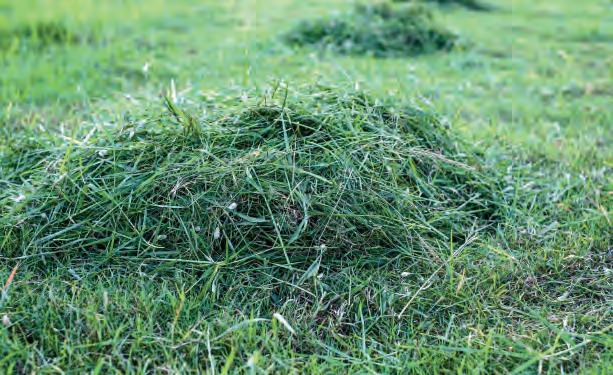
Above Grasscycling allows grounds professionals to reduce reliance on chemical fertilisers.
toxic residue.
Otterbine fountains provide the highest oxygen transfer and pumping rates in the industry – independent testing by the University of Minnesota and GSEE prove it – treating the water above and below the surface with its surface and subsurface ranges, eliminating the need for chemicals and attracting wildlife.
targeted watering for
There are so many issues affecting responsible golf course irrigation, and adopting sustainable maintenance practices is crucial to preserving the resource and using technology to combat the effects of climate change through the strategic and effective application of water is the way to do that.
No turf professional will need reminding that a pitch will have areas shaded by the surrounding stadium during different parts of the day, with resulting alterations in the turf’s irrigation needs. Equally, an exposed golf green, for example, will need a different management strategy compared to one that’s in a shaded, low-lying part of the course.
It has long been recognised that a blanket application of water is wasteful, and tackling this in practice is now made easier with Toro irrigation, which has led the way with state-ofthe-art computerised irrigation control systems


PROTEA 510G 12-BLADE GREENSMOWER and PROTEA 510 GROOMER
• Mow and verticut with machines built for each job
• 510G
• 510 GROOMER £2,500 + VAT
BOTH MACHINES AVAILABLE IN 25” WIDTH
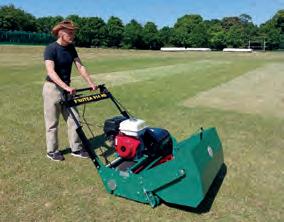
• PROTEA 914HD 36”
8-Blade heavy duty cylinder mower
• For football pitches, cricket
• £7,100 + VAT
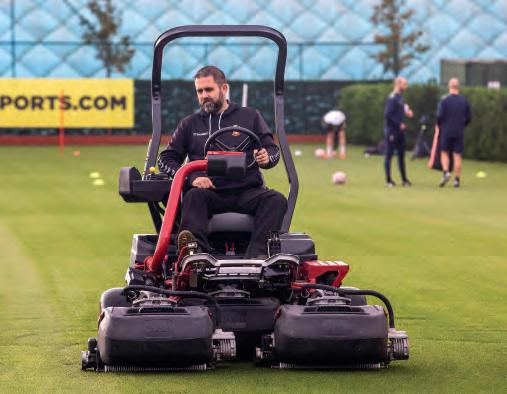
Below
such as Toro’s Lynx Central Control System, allowing watering times to be controlled down to the second. These systems are often used with an integrated weather station, pump station and wireless soil sensors to deliver the desired conditions with as little water as possible.
Sustainable machinery washing solutions
Sustainability goes beyond just the power source of your machines and it can be easy to overlook how something as simple as altering how you clean your machinery can contribute to a sustainability strategy.
Clubs can use upwards of 400-600 litres of water per hour to wash their equipment with a pressure washer. In a climate where responsible water management is paramount, using an alternative parts cleaner that is powerful enough to cut through grease, oil, grass clippings, whiteline paint and fertiliser, while eliminating the need to pressure wash parts
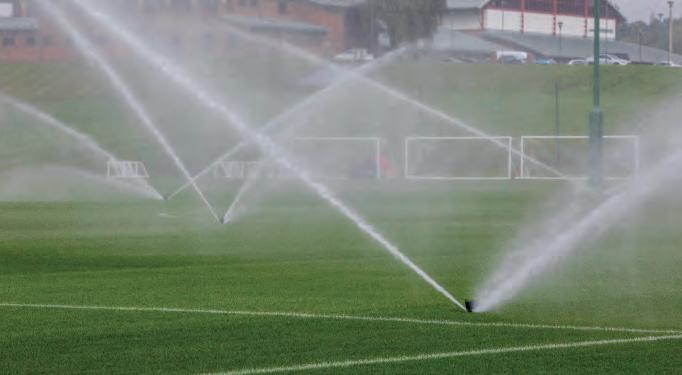
and free of harmful chemicals, limits wastage and has a positive effect on finances and the environment.
Containing the cleaning process with Bio-Circle’s recirculation system guarantees a longer service life of the cleaning agent and controls the disposal of the cleaning solutions.
Initiatives to help
Even with the above, getting started can be tricky and each venue and business will have different aims and capabilities.
GreenGrounds is a partnership between machinery distributor Reesink Turfcare and Bio-Circle, specifically formed to solve the problem of the general misunderstanding that surrounds starting an achievable and effective sustainability project.
As previously mentioned, there’s no formal consensus on what effective sustainable measures are, and clubs and businesses don’t follow the same sustainability guidelines, but keen to encourage turf professionals to focus on their sustainable responsibilities, the two businesses provide free advice, knowledge and creative and practical solutions.
The initiative is about making sustainable ground accessible to those working in the industry, focusing on making the process easy, and removing the barriers or fear.

To learn more, call 01480 226800 or email info@reesinkturfcare.co.uk




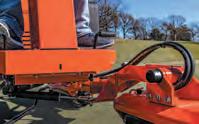









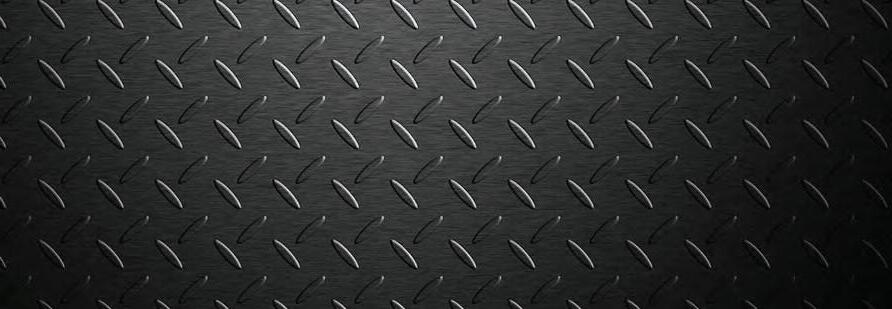













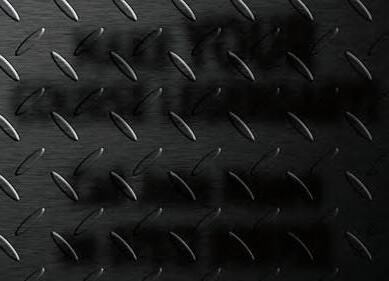













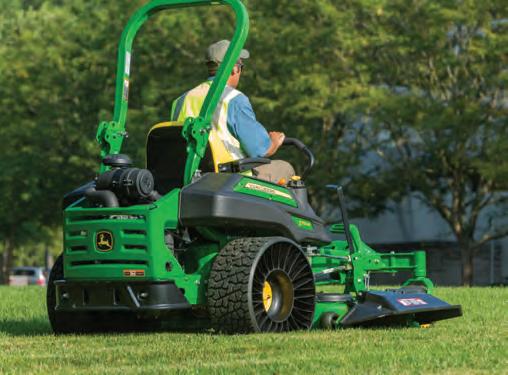



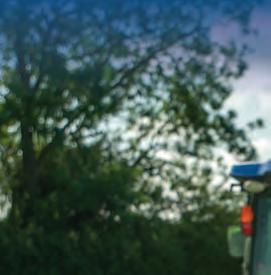


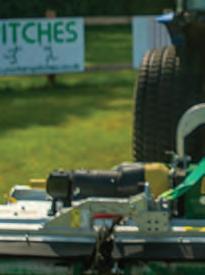







Trainer and conference speaker Frank Newberry does a rapid-fire report on the effects of laughter in our lives. He concludes that it isgood to laugh.
Good for our nerves, good for our stress levels, good for our breathing, good for our blood circulation, good for our blood pressure and good for our immune system.
Research shows that on average:
Children smile
Adults smile
Children laugh
Adults laugh
400
150 15 6 times per day times per day times per day times per day
Research also shows:
Laughter releases emotional and physical tension and relaxes the sympathetic nervous system.
This reduces stress and can make us more alert.
In order to laugh we have to breathe more deeply.
This in turn improves our blood circulation and brings down blood pressure.
One hundred laughs per day is equivalent to ten minutes vigorous rowing as far as our cardio-vascular systems are concerned.
Laughter releases endorphins (the body’s natural pain killers).
Their release bolsters the body’s natural immune system.
It’s good to laugh!
Laughter can:
• Stimulate many organs. Laughter enhances your intake of oxygen-rich air, stimulates your heart, lungs and muscles, and increases the endorphins that are released by your brain.
• Activate and relieve your stress response. A rollicking laugh fires up and then cools down your stress response, and it can increase and then decrease your heart rate and blood pressure. The result? A good, relaxed feeling.
• Soothe tension. Laughter can also stimulate circulation and aid muscle relaxation, both of which can help reduce some of the physical symptoms of stress.
Laughter is the best medicine
Go ahead and give it a try.
If you are feeling a little down - form your mouth into a smile and then give a laugh, even if it feels a little forced. Once you’ve had your chuckle, take stock of how you’re feeling. Are your muscles a little less tense?
Do you feel more relaxed or buoyant?
That’s the natural wonder of laughing at work.
© 2024 Frank Newberry. If you have any questions about communication, management or problem solving please get in touch with Frank at: franknewberry.com























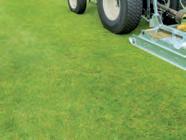






























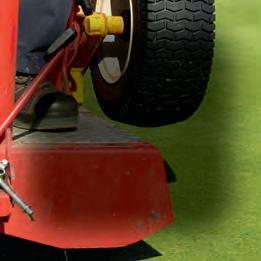

DOLLAR SPOT OUTBREAKS INCREASINGLY RESULT IN SERIOUS SURFACE QUALITY LOSS ON GREENS, APPROACHES AND TEES. CHANGING CLIMATIC CONDITIONS AND ITM PRACTICES ARE DRIVING THE SEVERITY OF ATTACKS. TURF ADVISOR GIVES YOU THE DATA TO DECIDE CONTROL STRATEGIES.
TURF ADVISOR TOOLS
Pick the appropriate Turf Advisor tools for your dashboard and prioritise their order, to better understand dollar spot risks and when to act.
HUMIDITY & LEAF WETNESS
Dollar spot thrives in humid conditions and leaf wetness – with dry roots. Turf Advisor provides weather data sets to alert high risk periods, in time to take action before disease breaks out.
RAINFALL
Keep track of recent rainfall and accurate forecasts for the coming days. Instant view of average data for the past two weeks, and historic 10-year records for your current two-week period.
EVAPOTRANSPIRATION
Dry soils are associated with more severe outbreaks of dollar spot, particularly where turf is under greater stress. Turf Advisor forecasts of evapotranspiration can help manage and mitigate any deficits earlier and more effectively.



Syngenta Turf Advisor gives greenkeepers, turf managers and agronomists instant access to a wealth of key information and advice to help make better decisions for day-to-day actions and planning.
Fully customisable for any location and situation, the Turf Advisor app provides essential weather data and turf management models, presented in a clear dashboard that can be tailored and adapted through the season to focus on imminent issues and challenges faced.

Recognised as the most accurate available model for dollar spot risks, Turf Advisor indicates pressure over the past week and for the coming days – to help you assess risk. Also gives a two-week average and a historical risk to aid better decision making.
AIR TEMPERATURE
Temperature is one of the main drivers of dollar spot infection. Although it is built into the Smith-Kerns model, the actual data helps quantify risk pressures.
Application timing is crucial to apply preventative fungicide strategies for dollar spot. Turf Advisor gives an accurate picture of available spraying opportunities for all applications.










Issue No. 114 • May/June 2024
Don’t take life too seriously. You will never get out of it alive